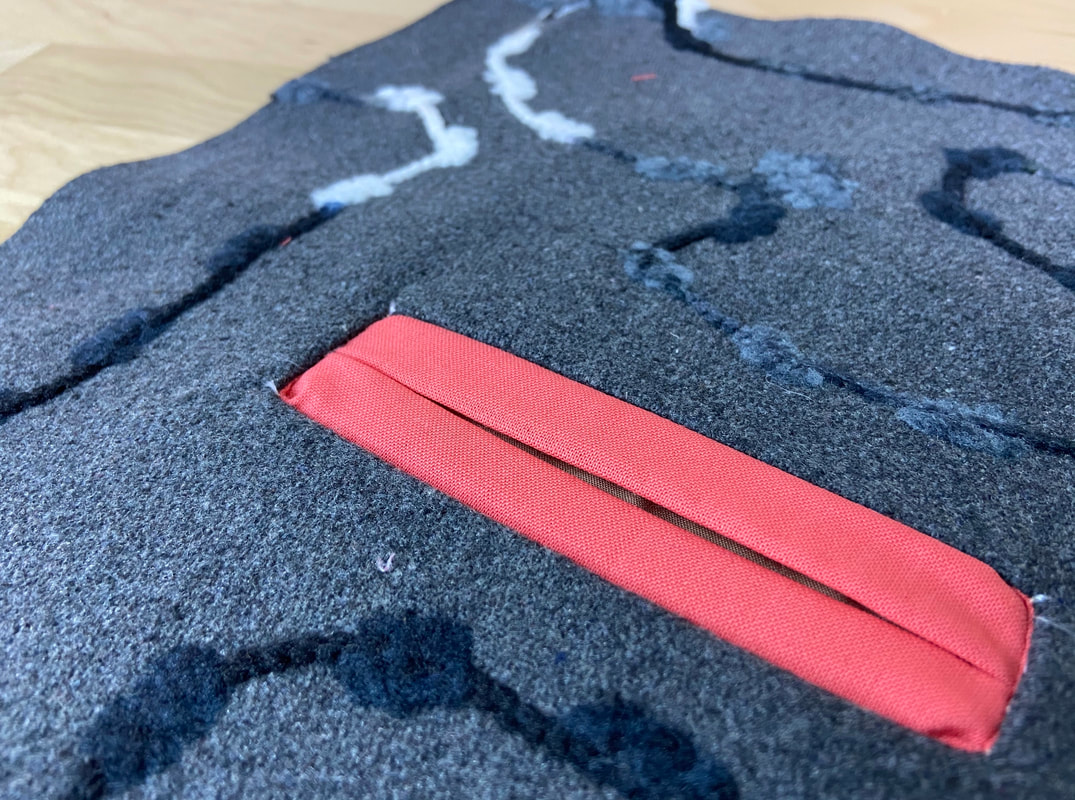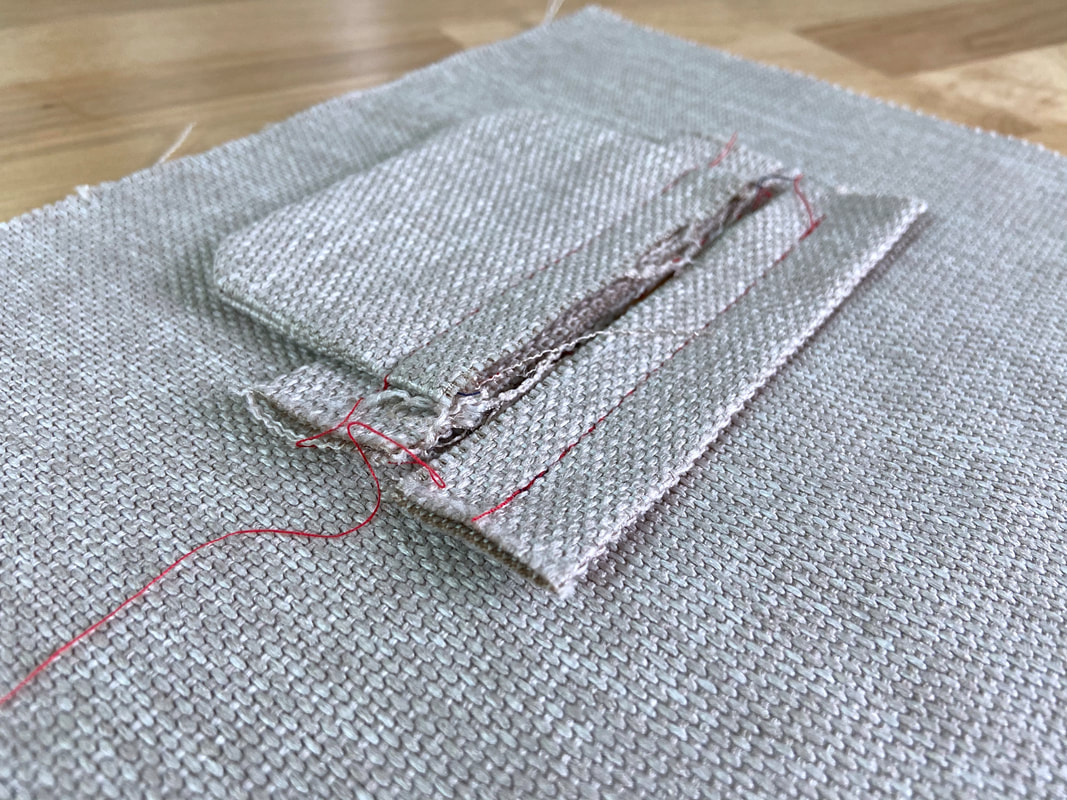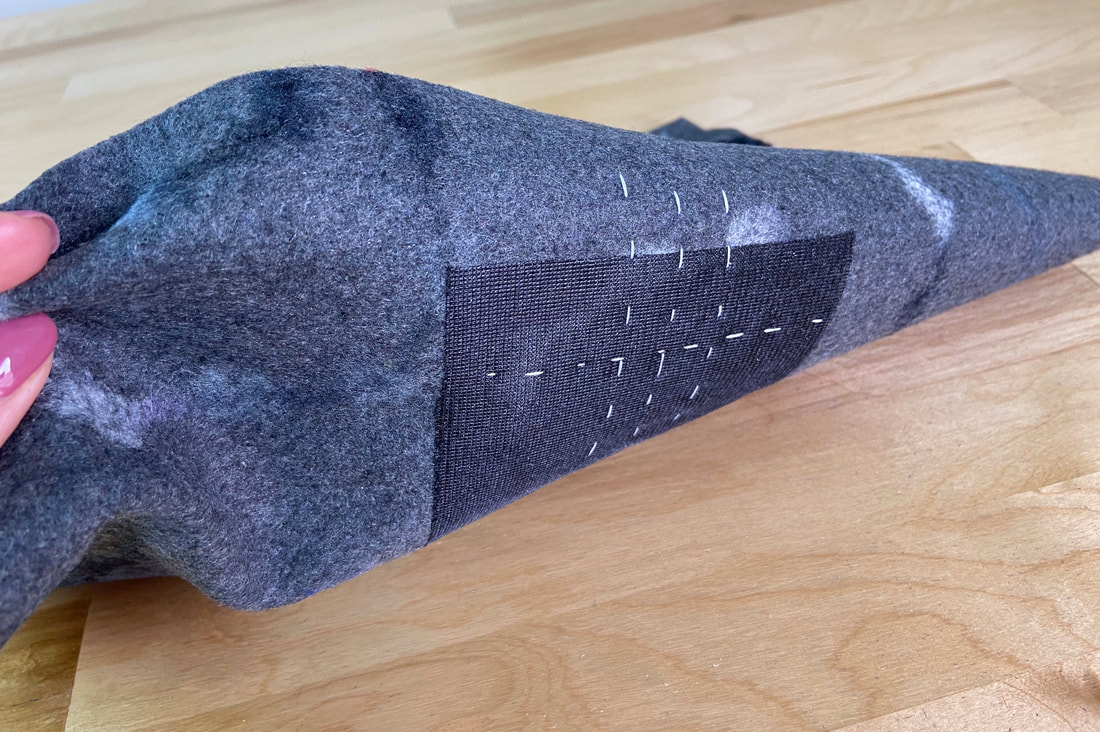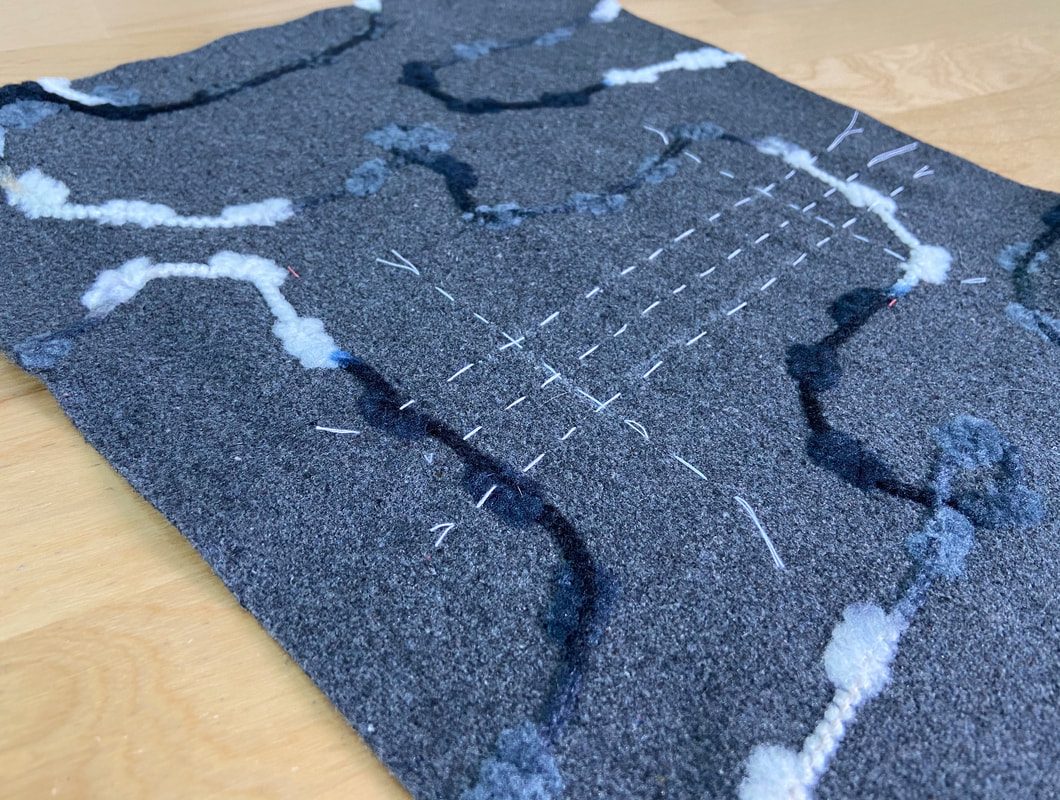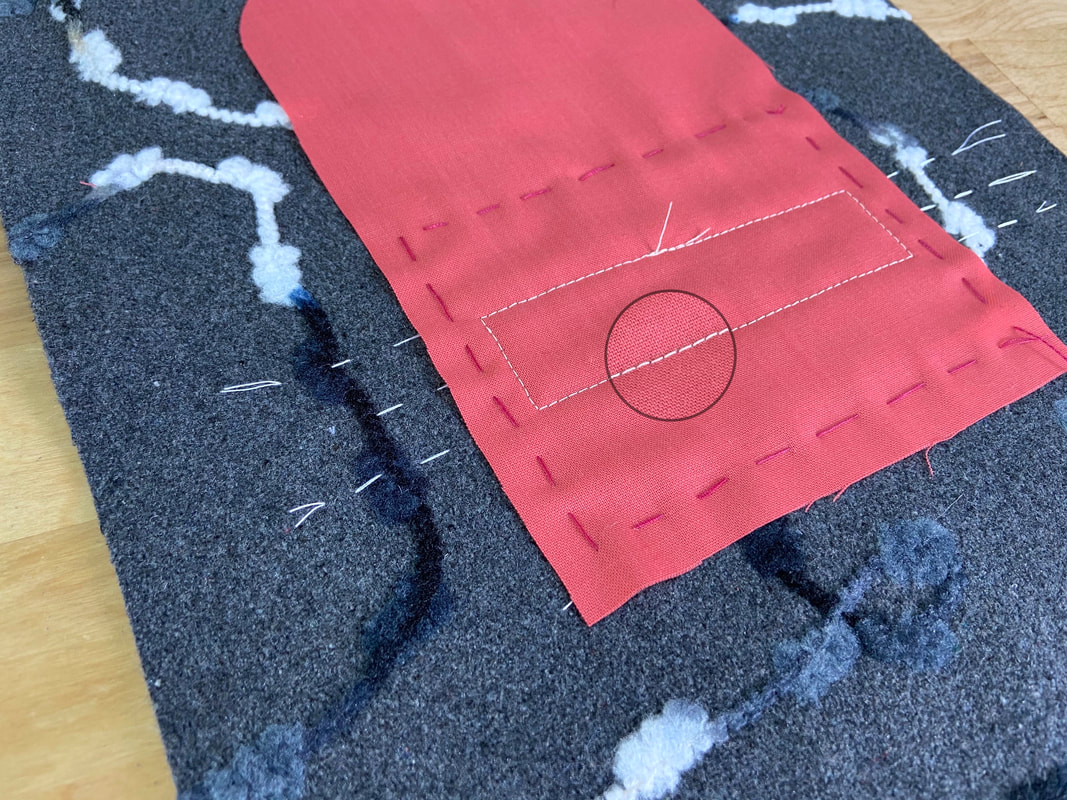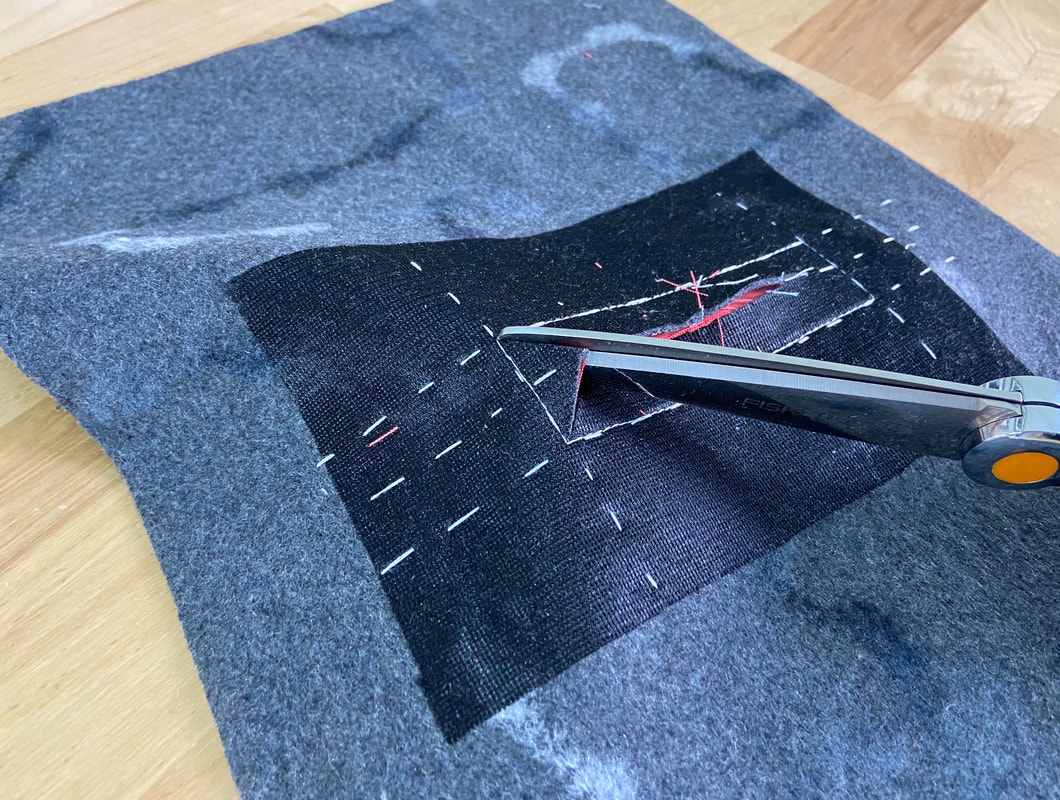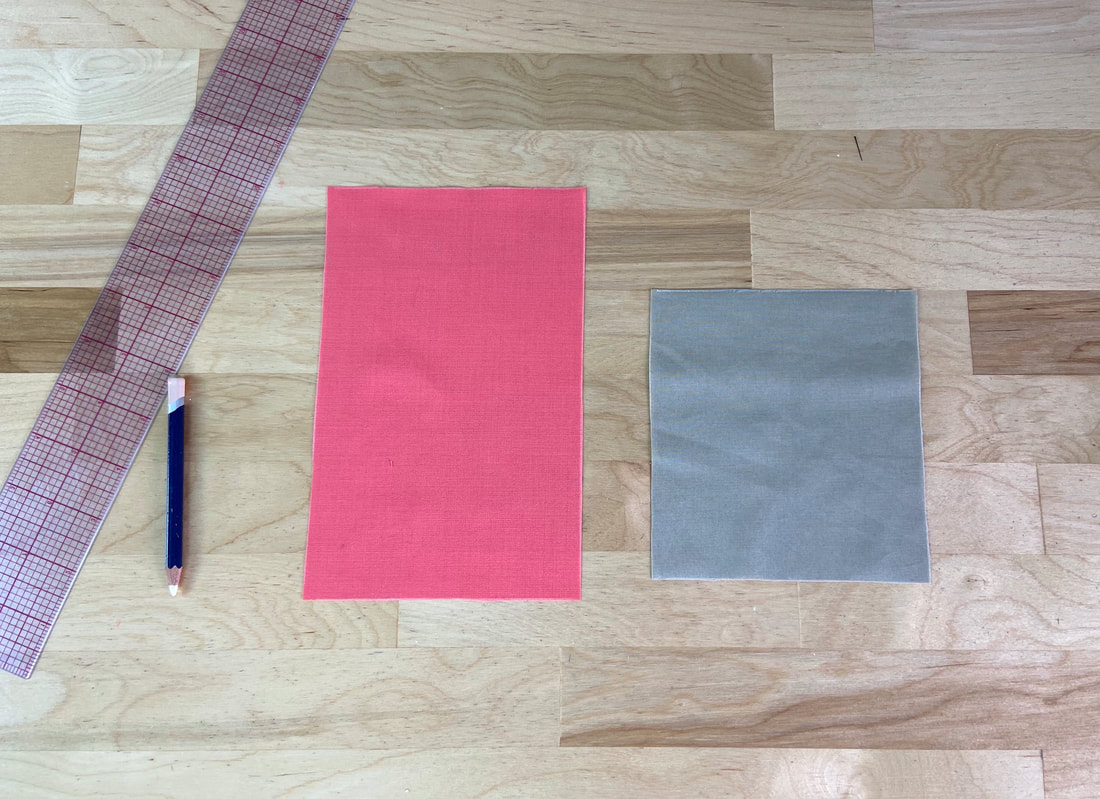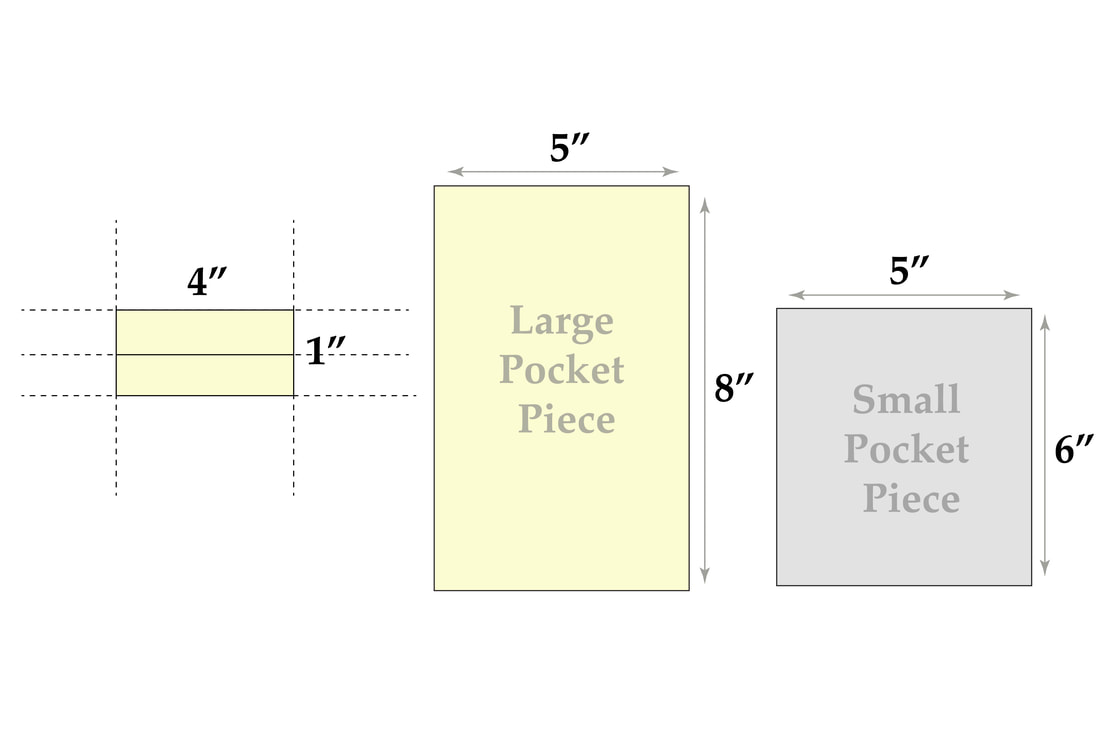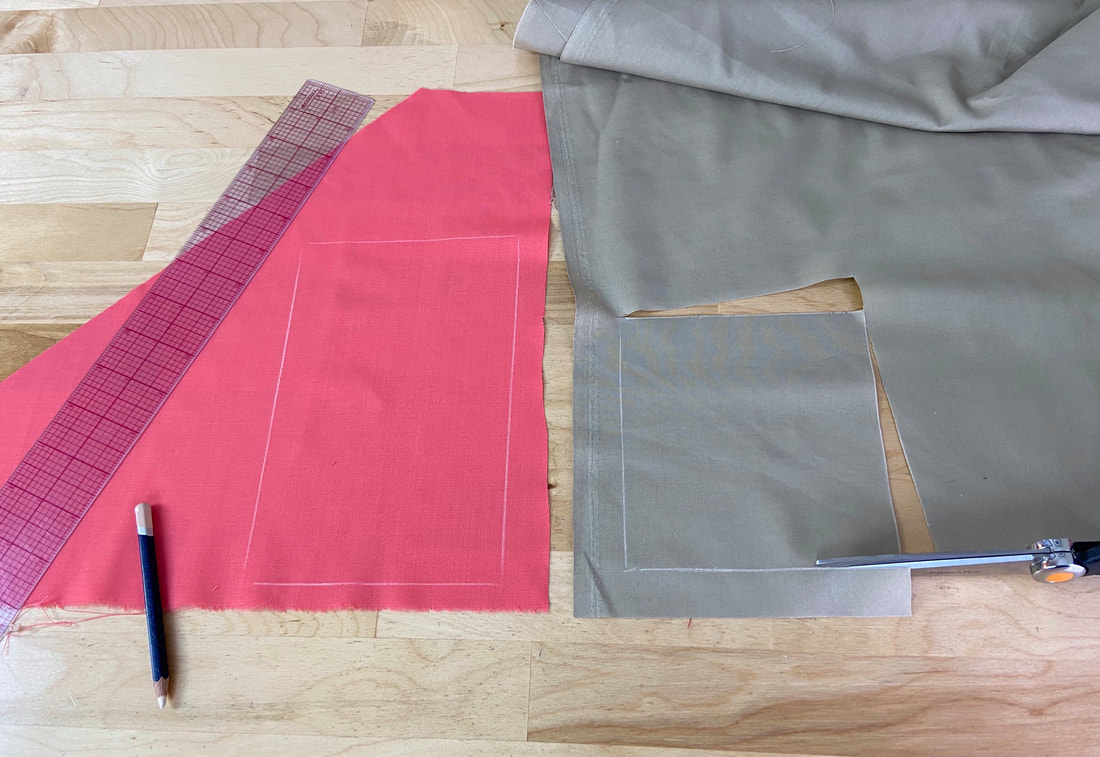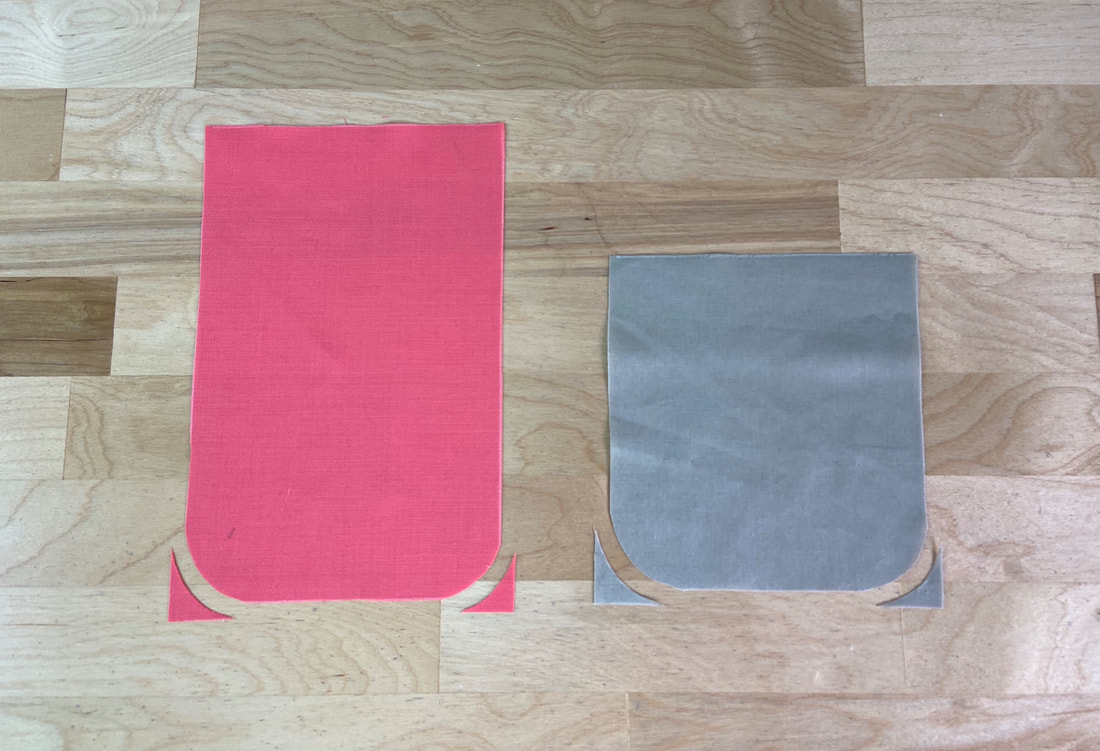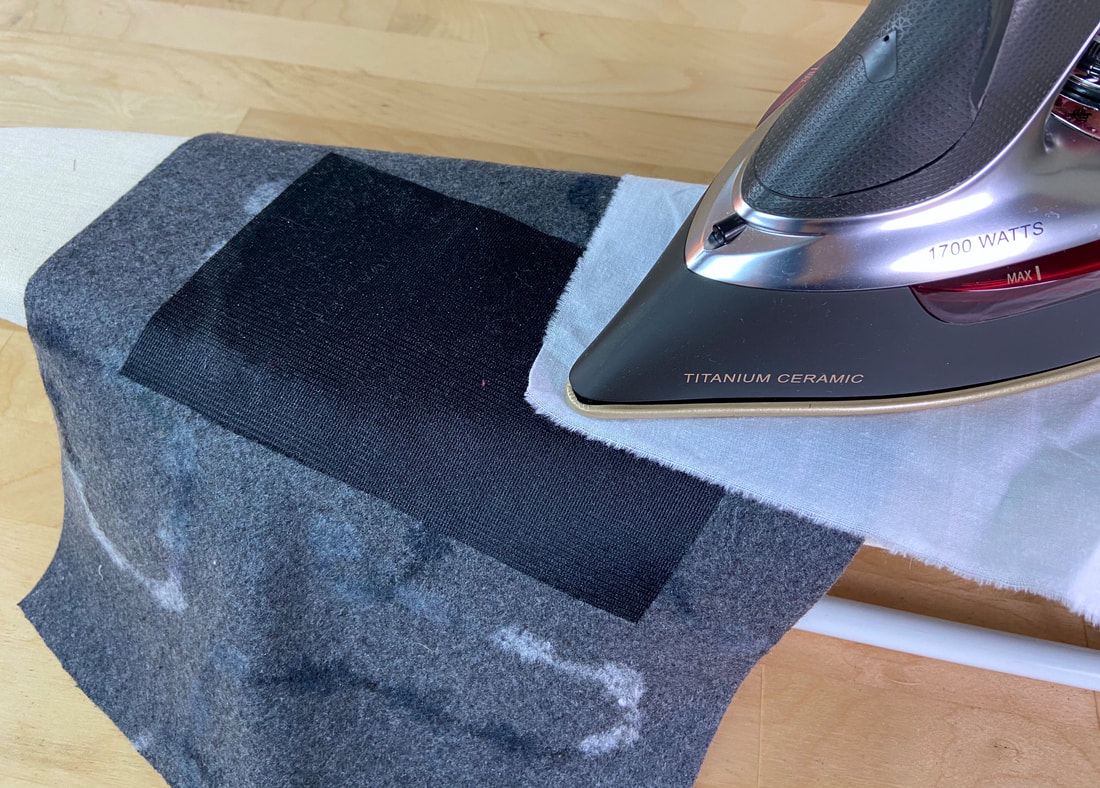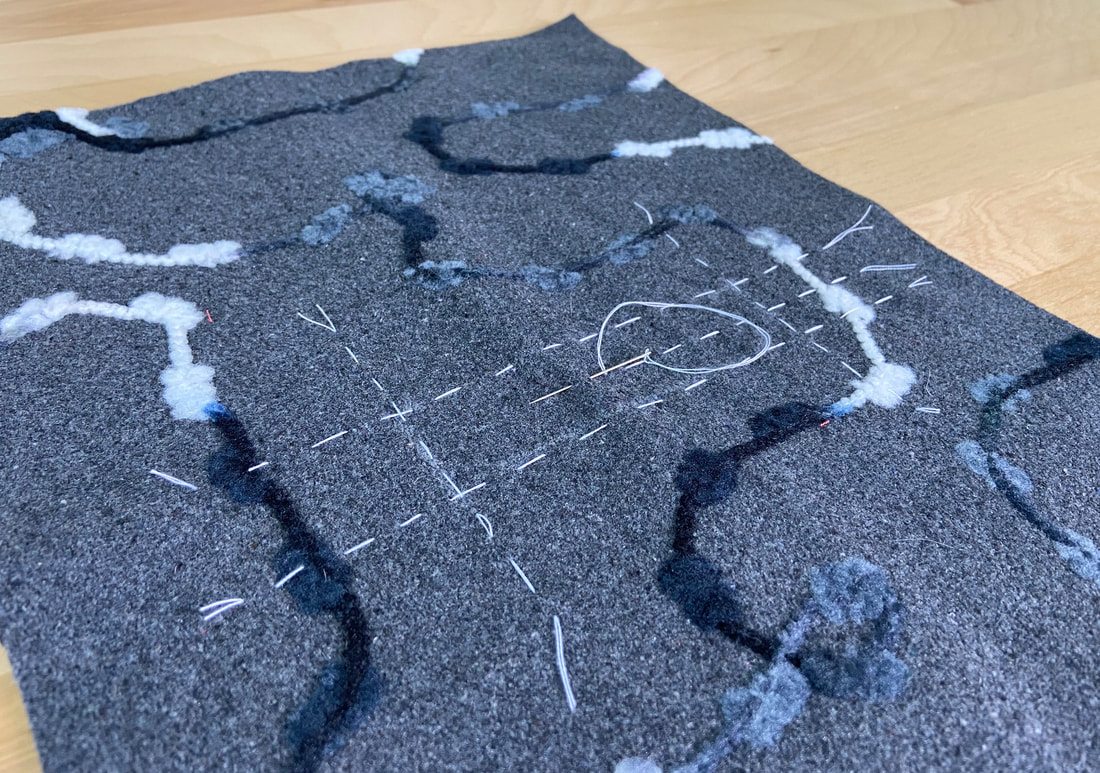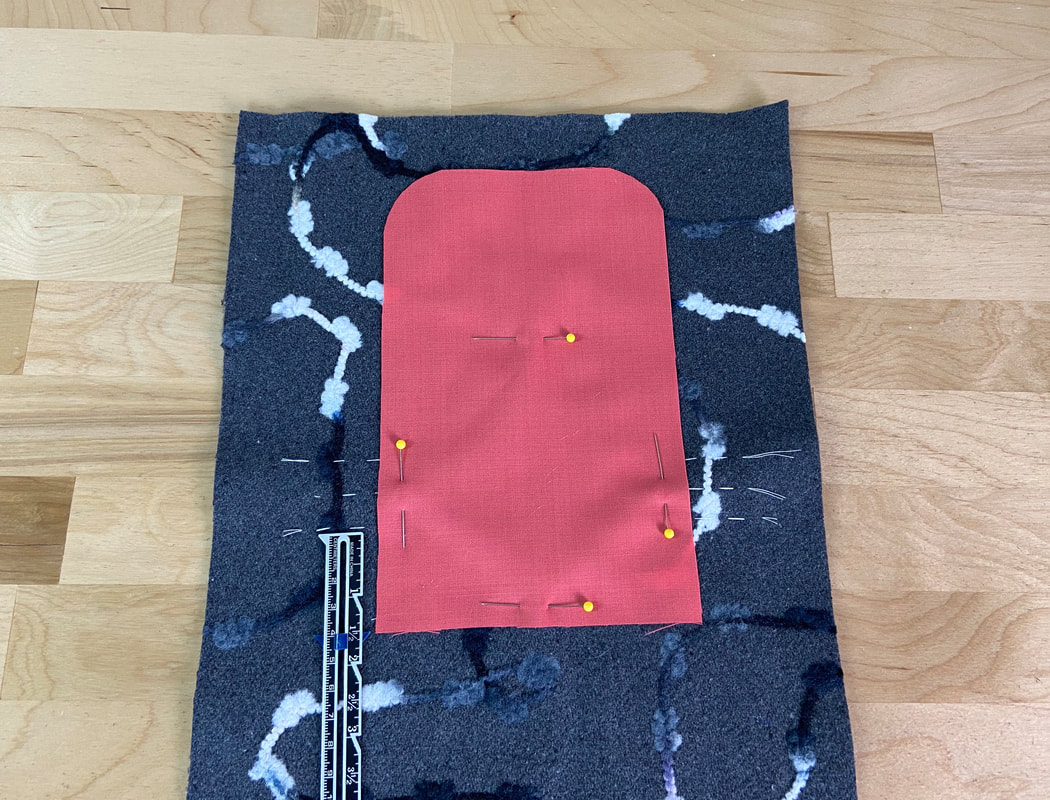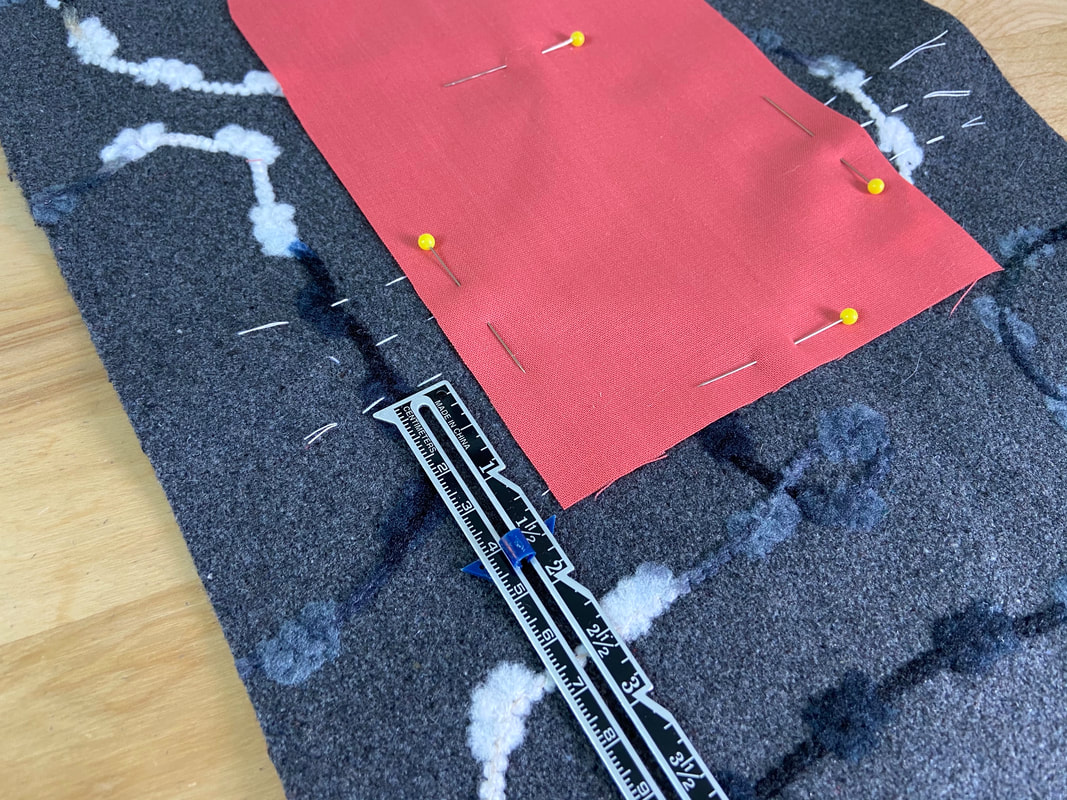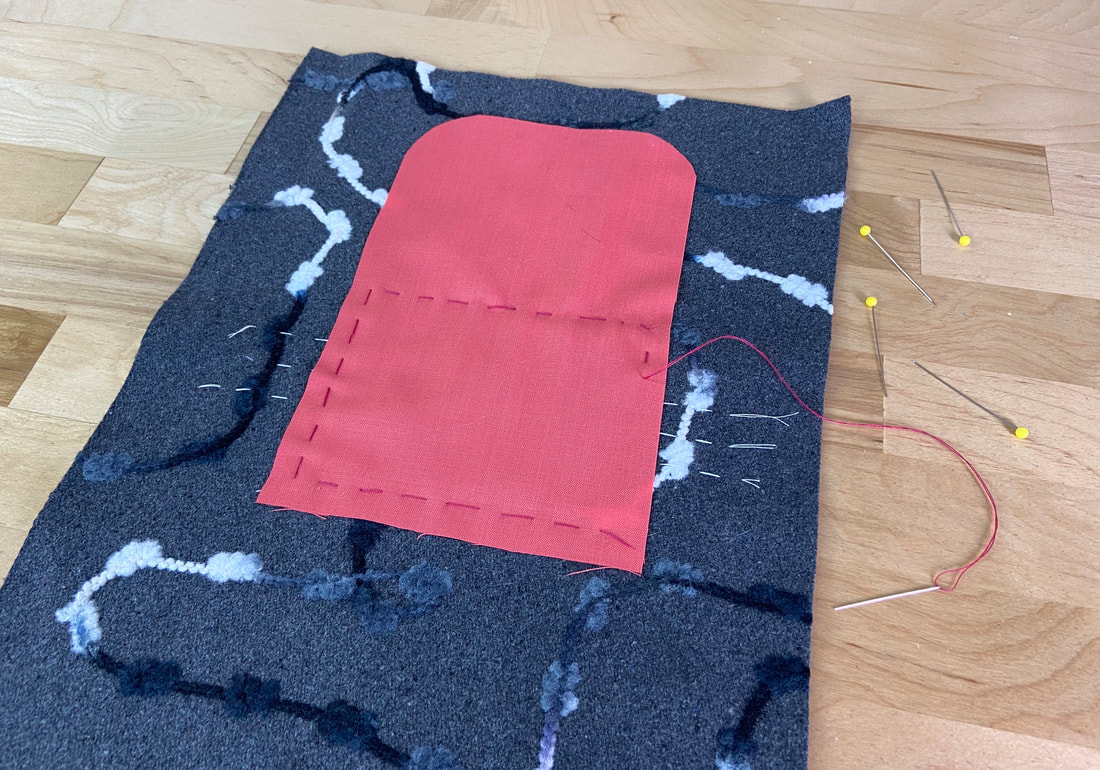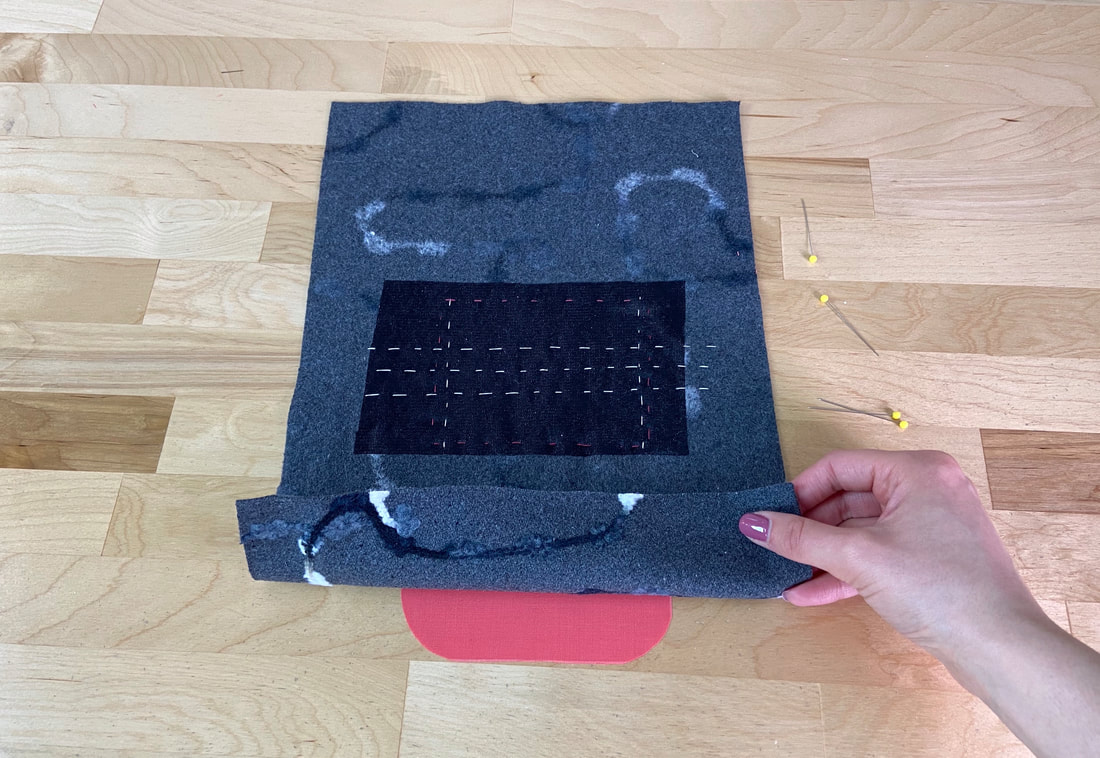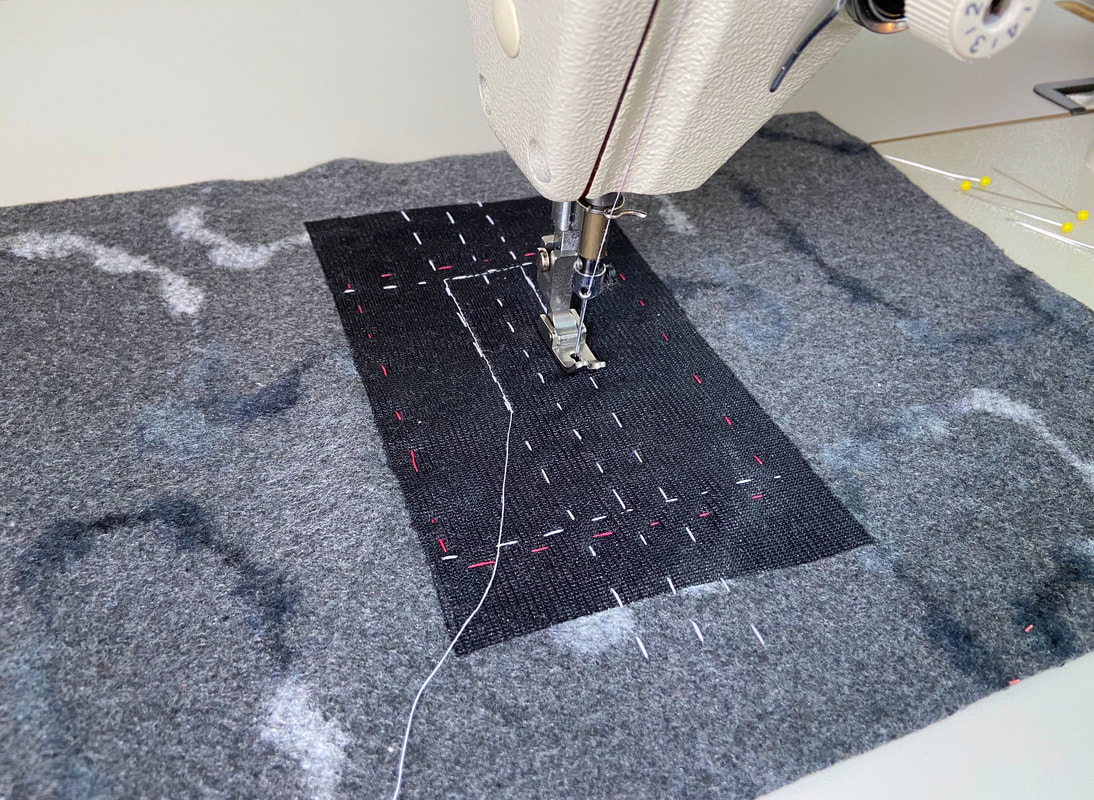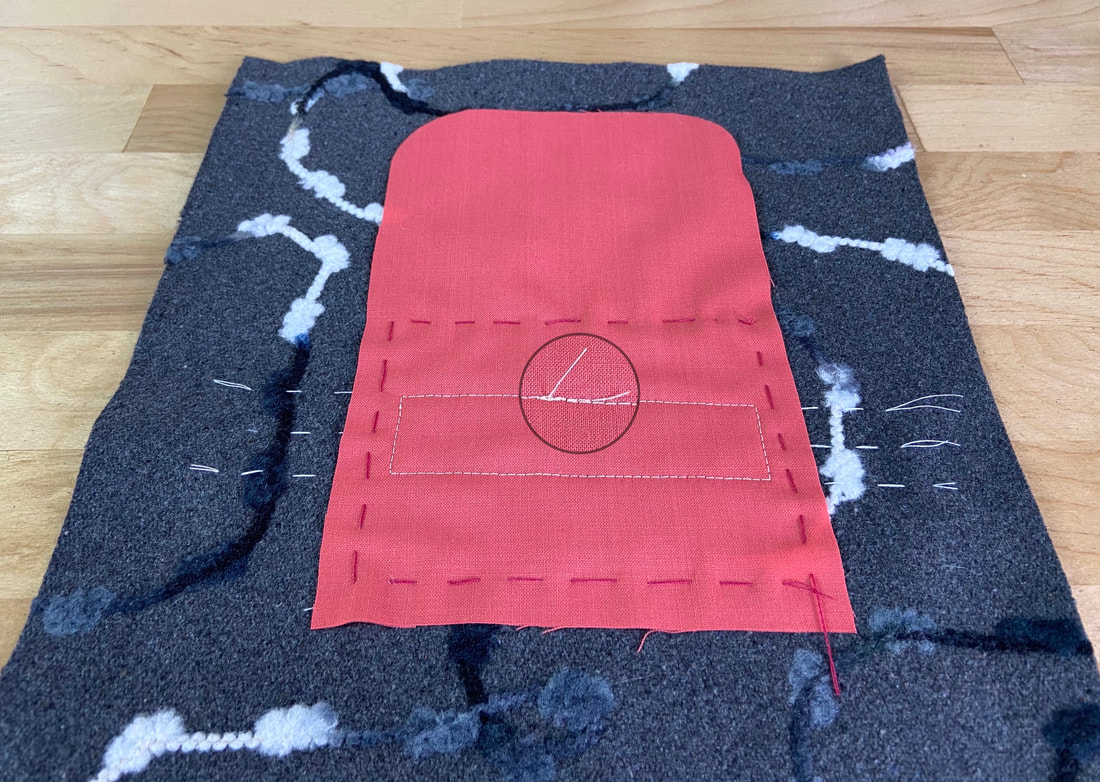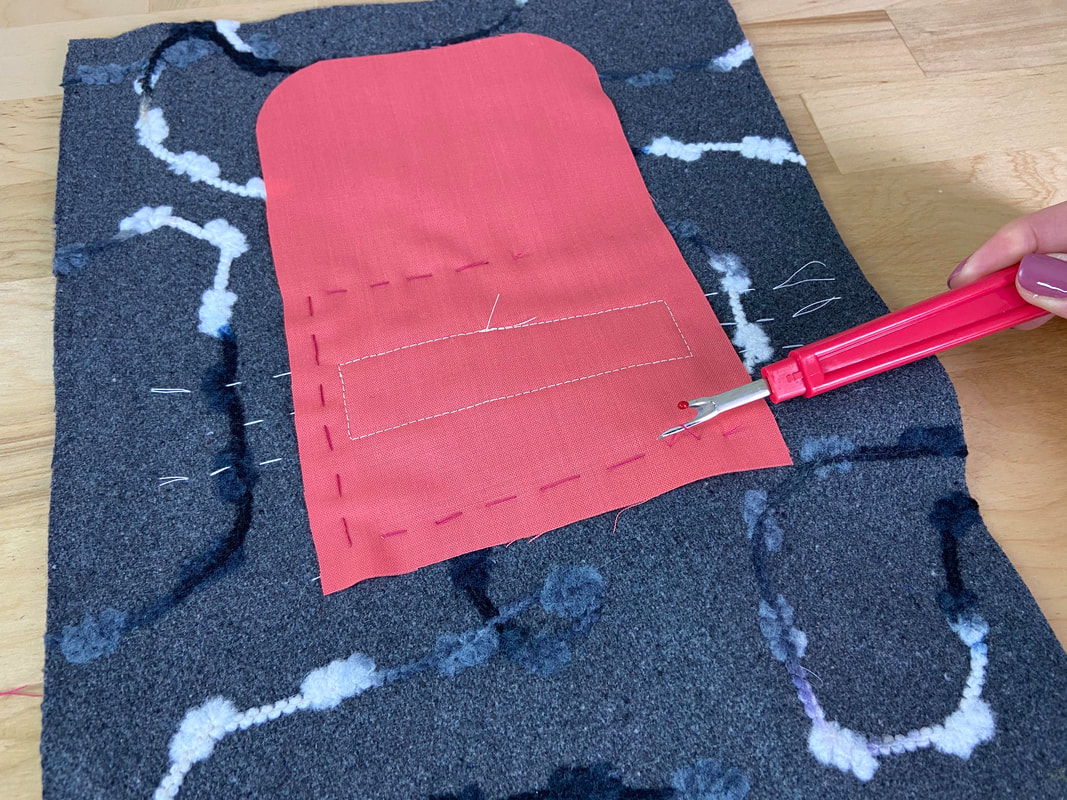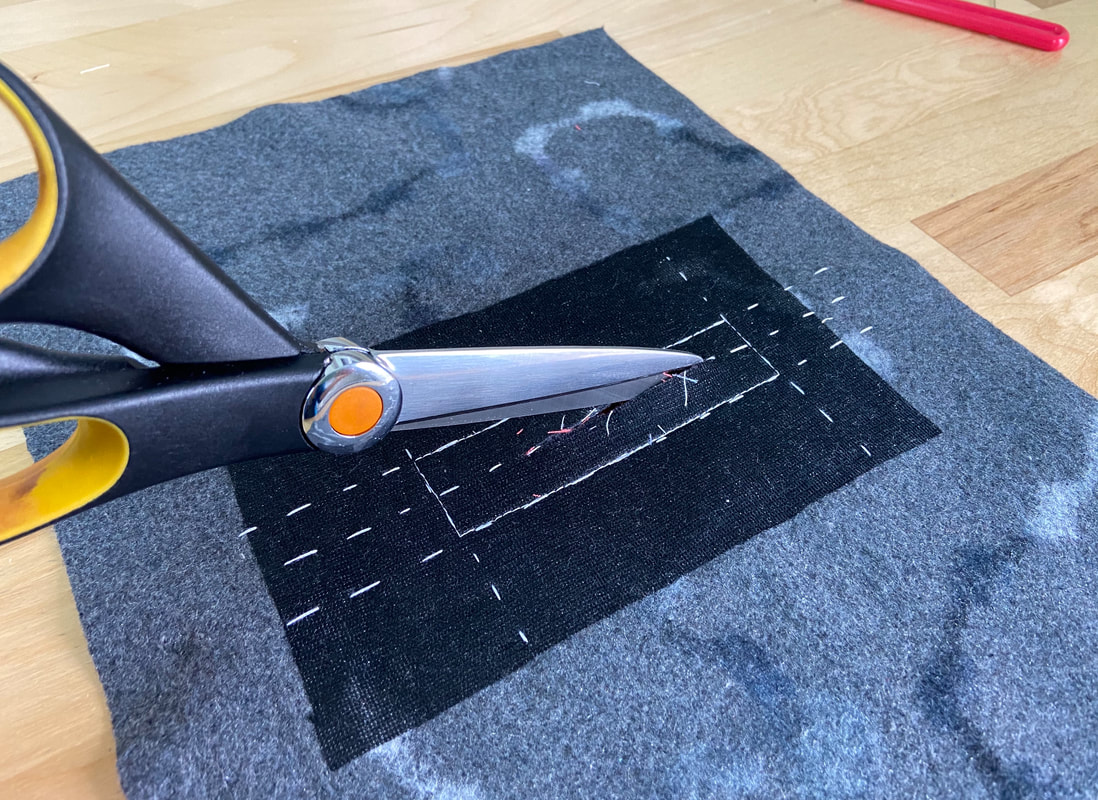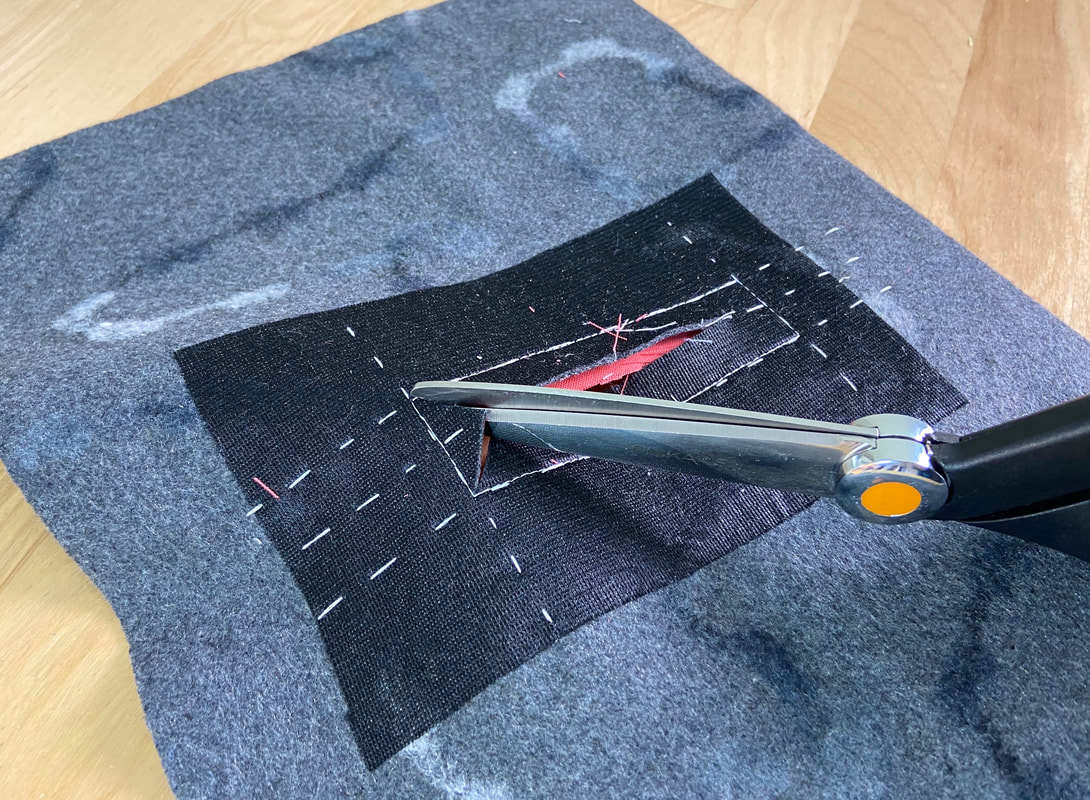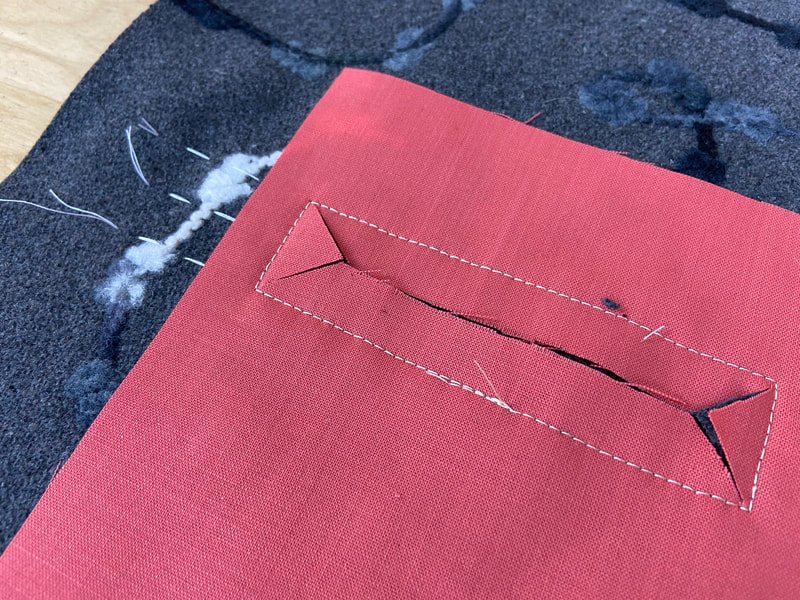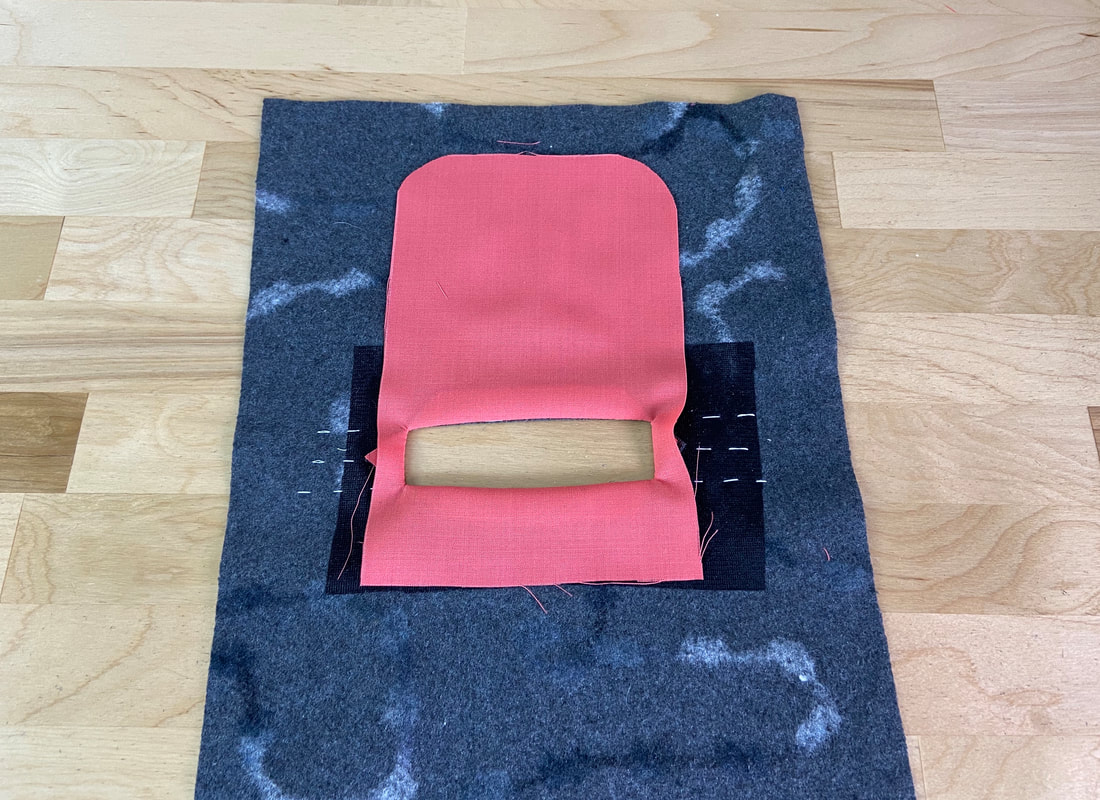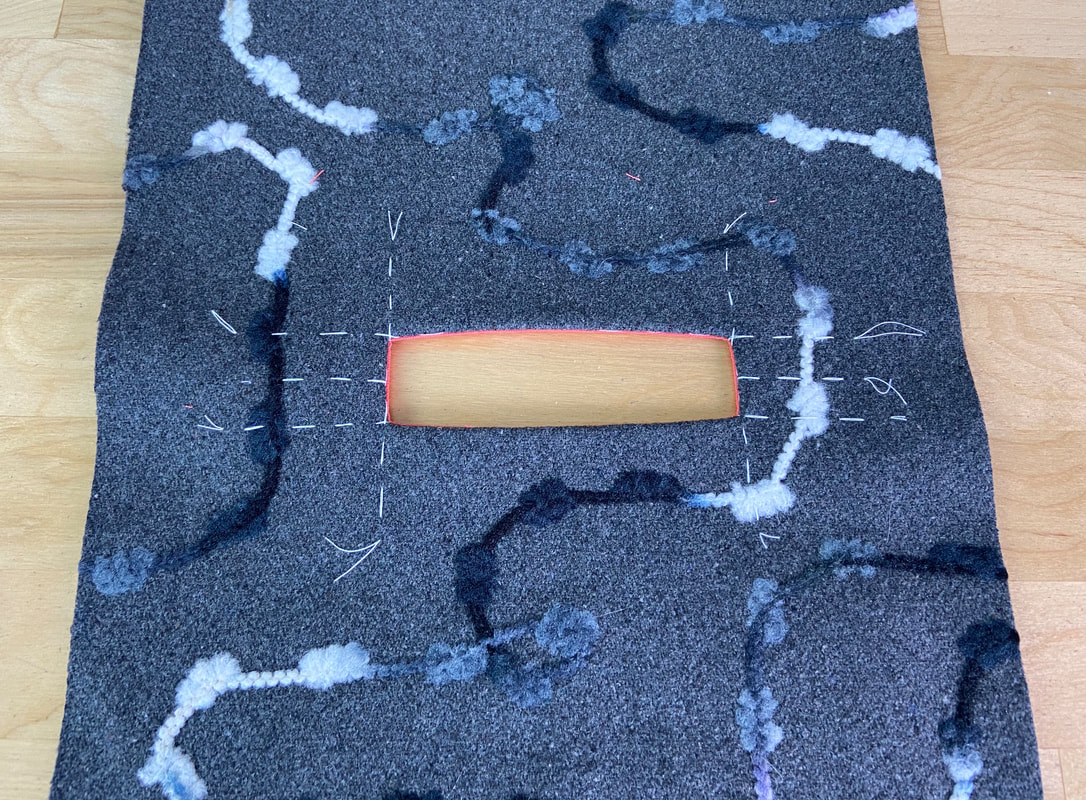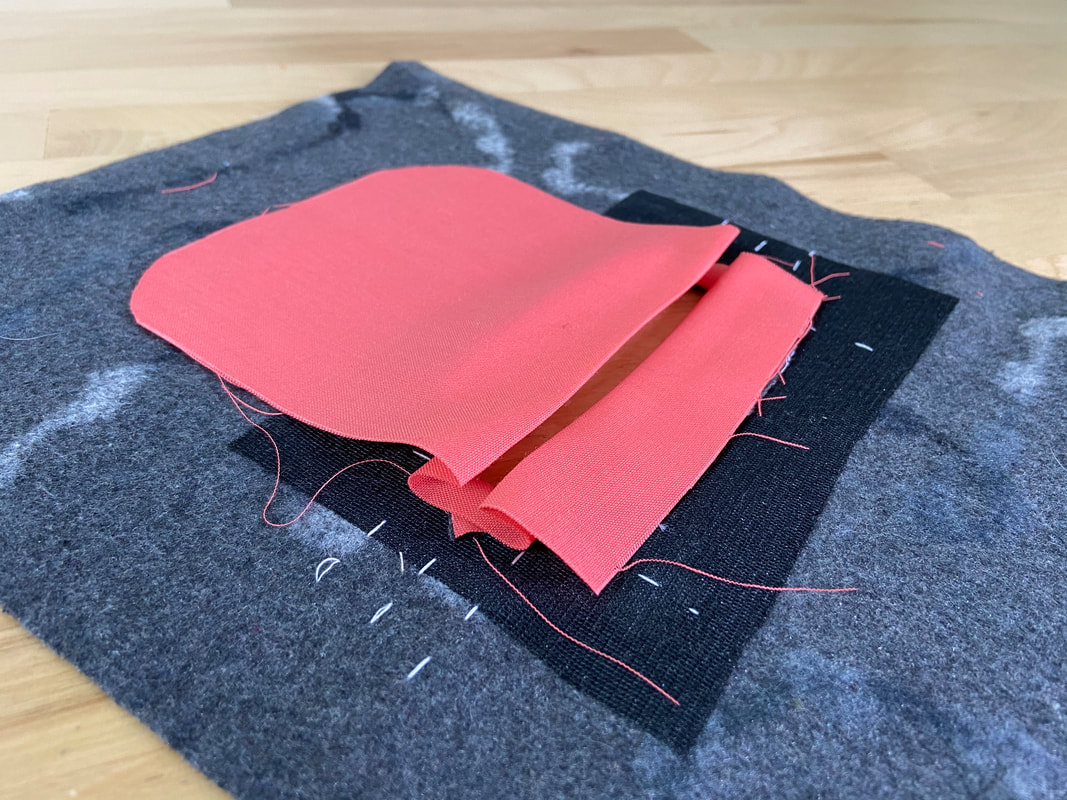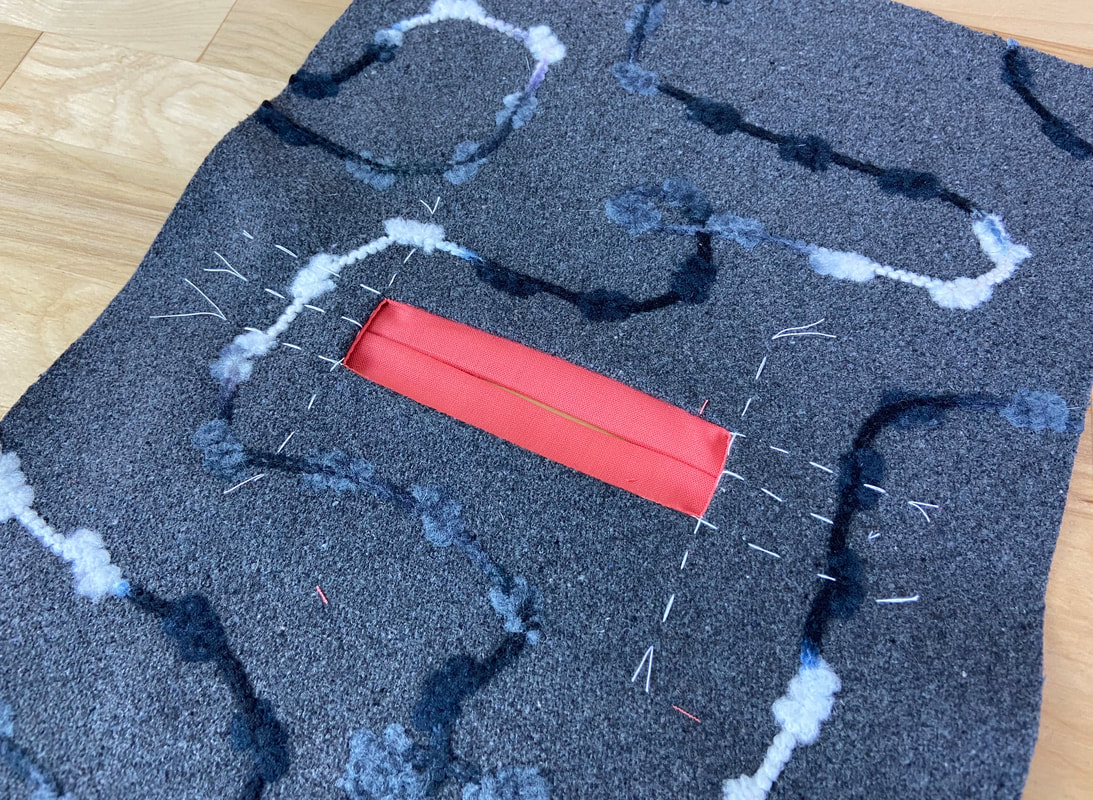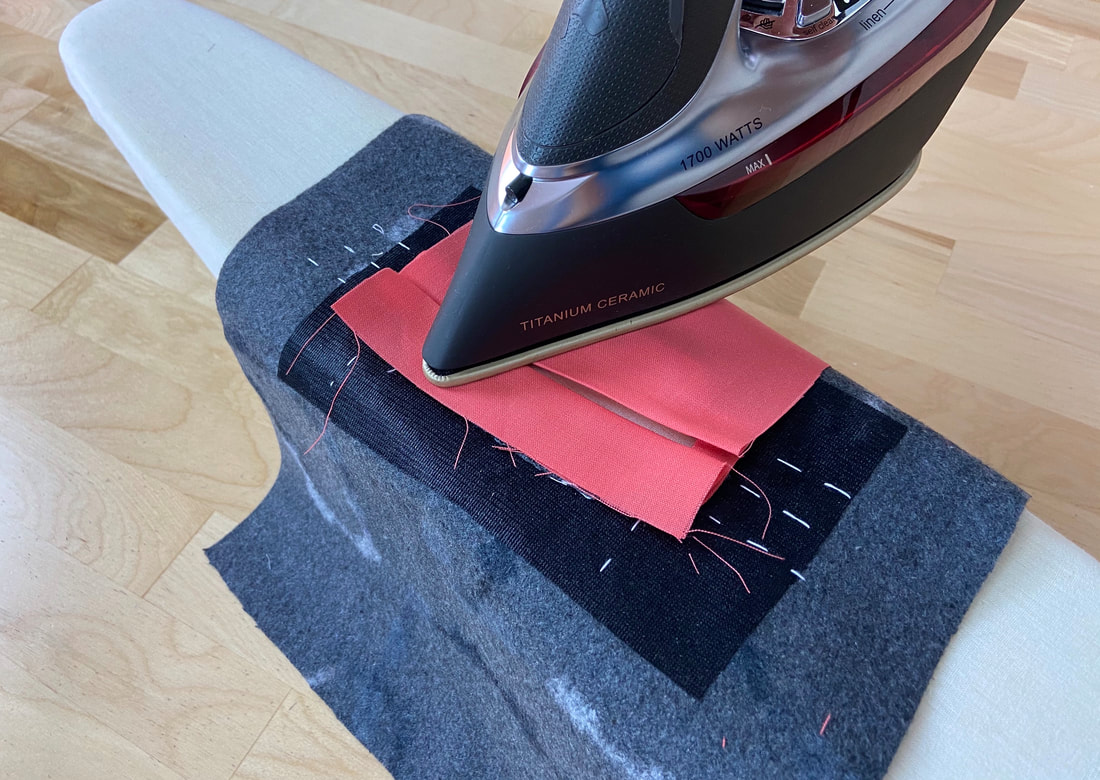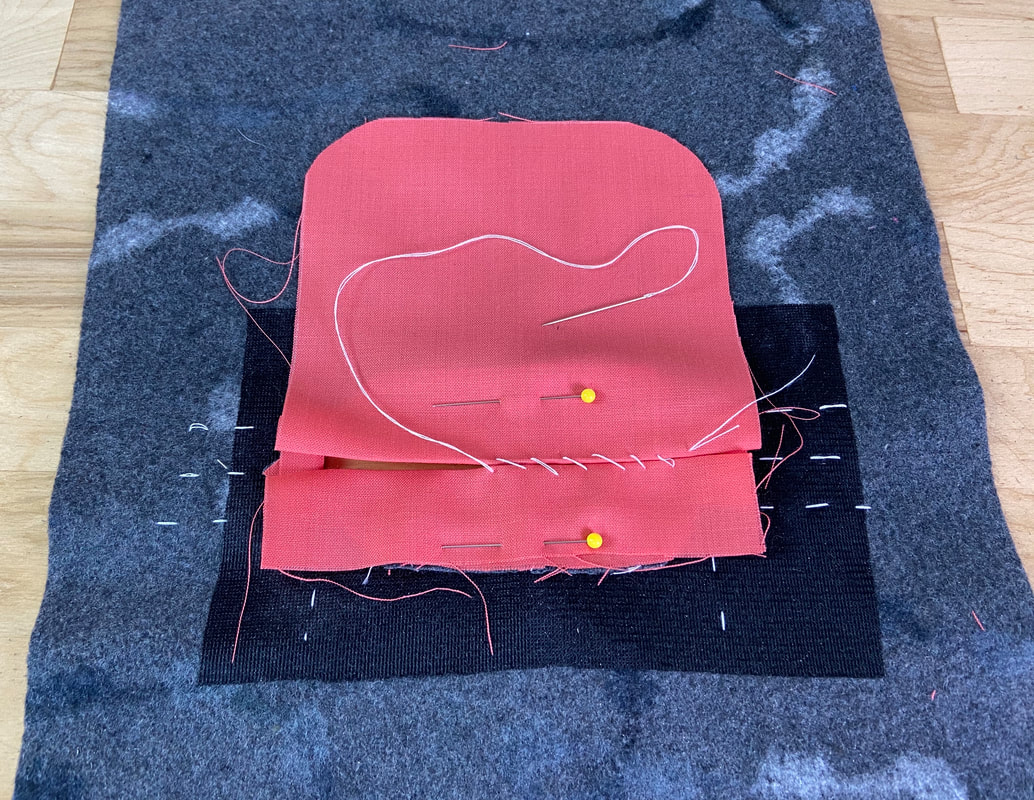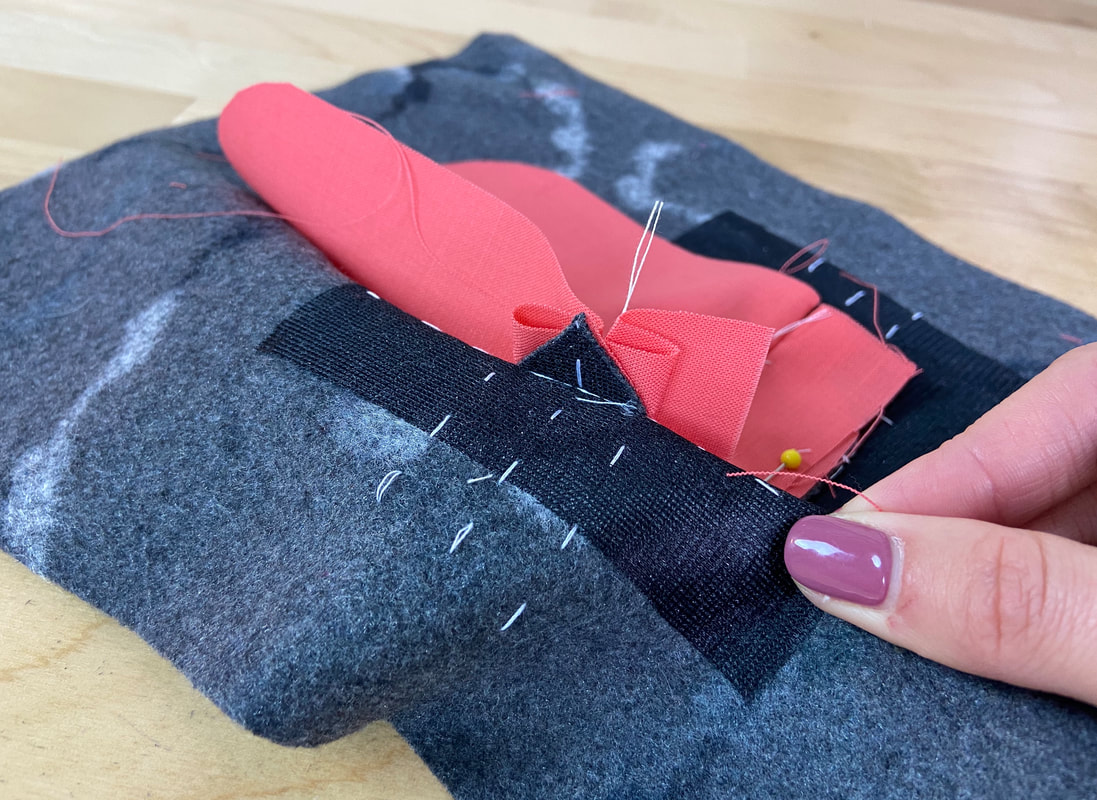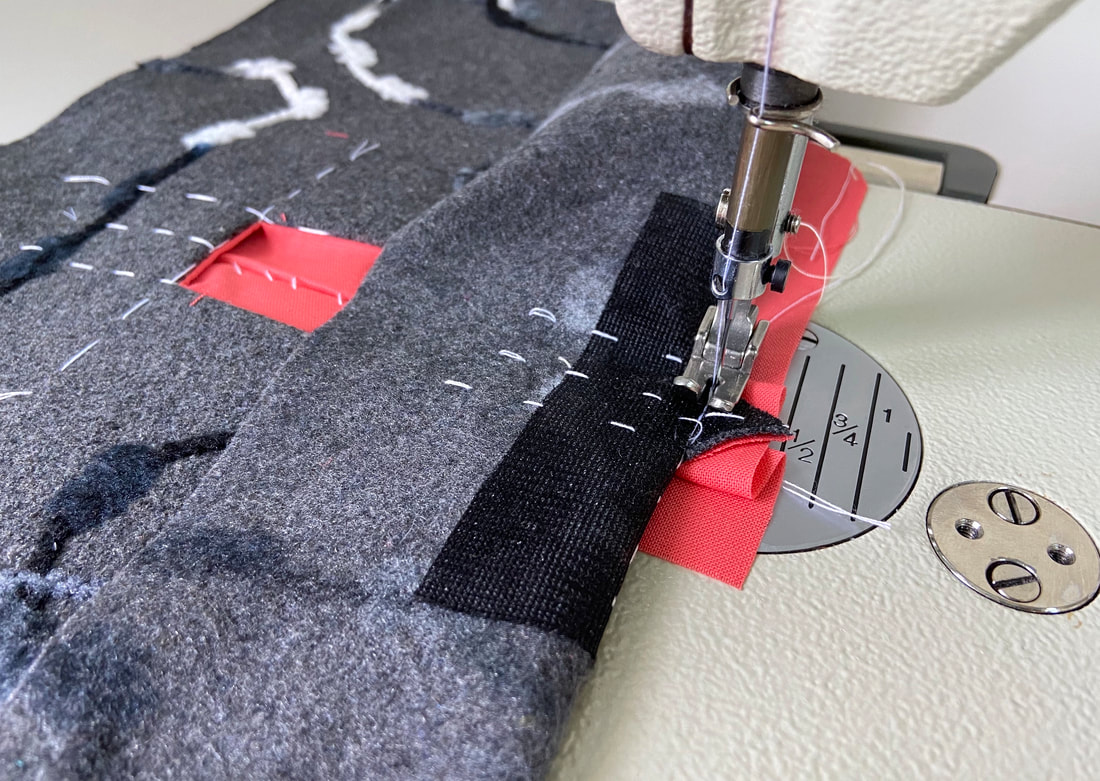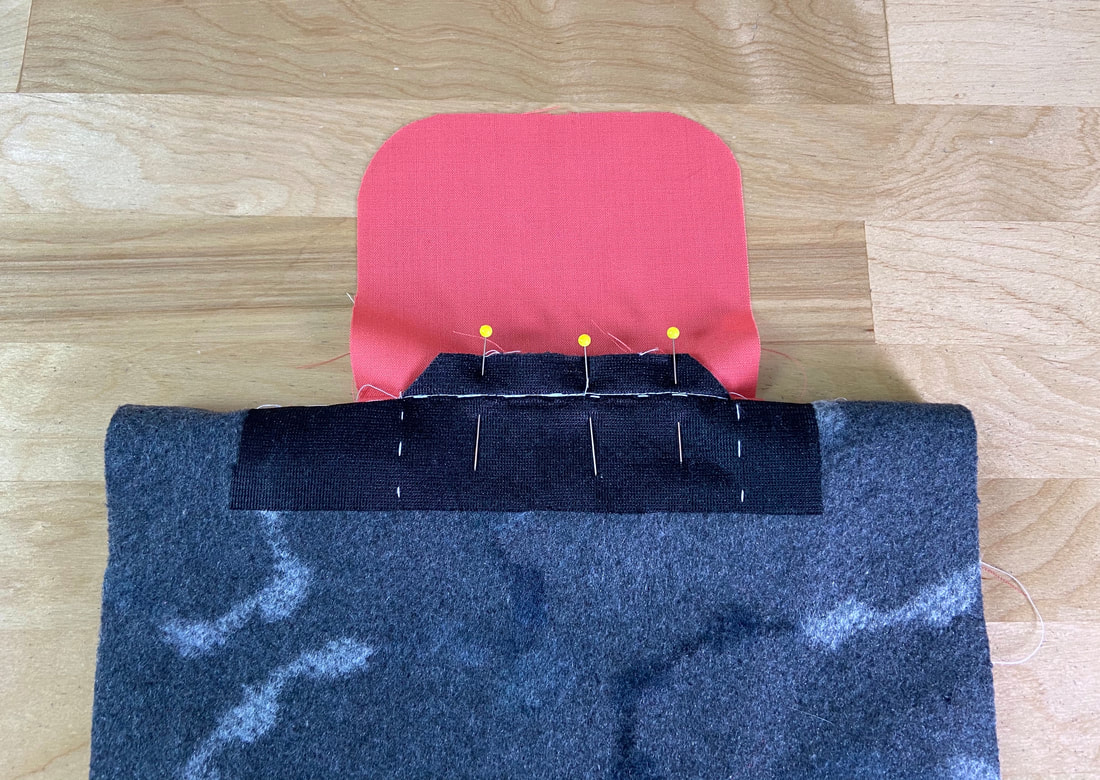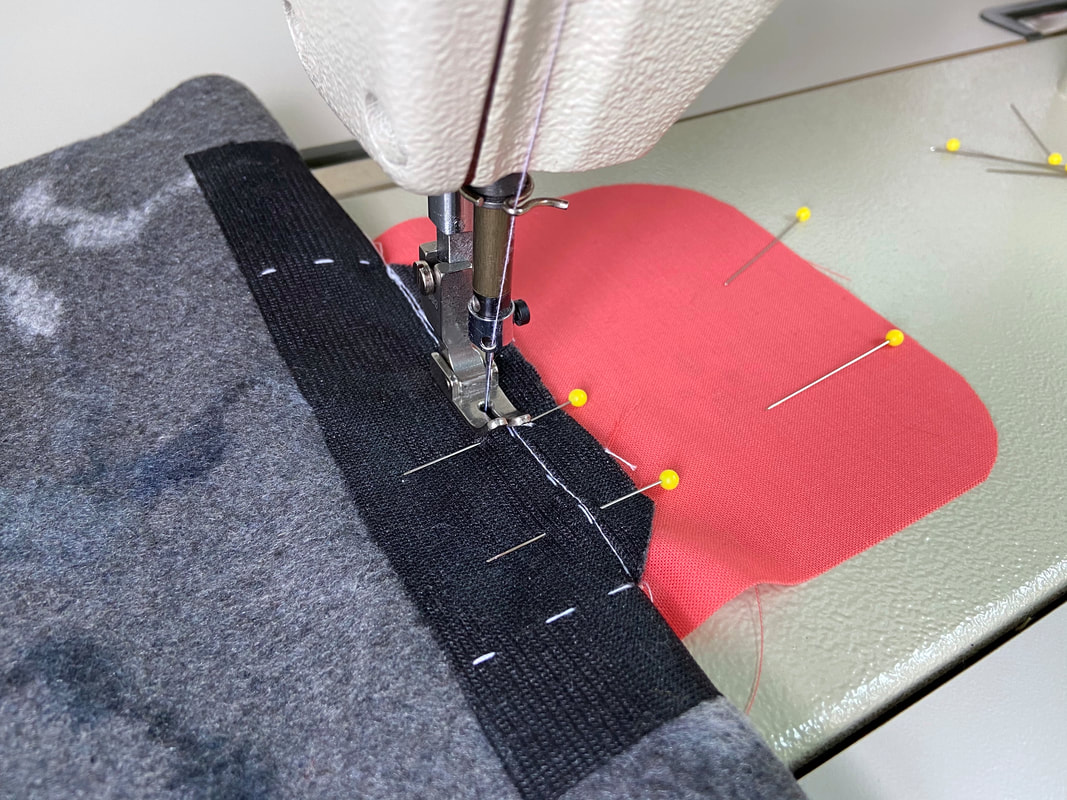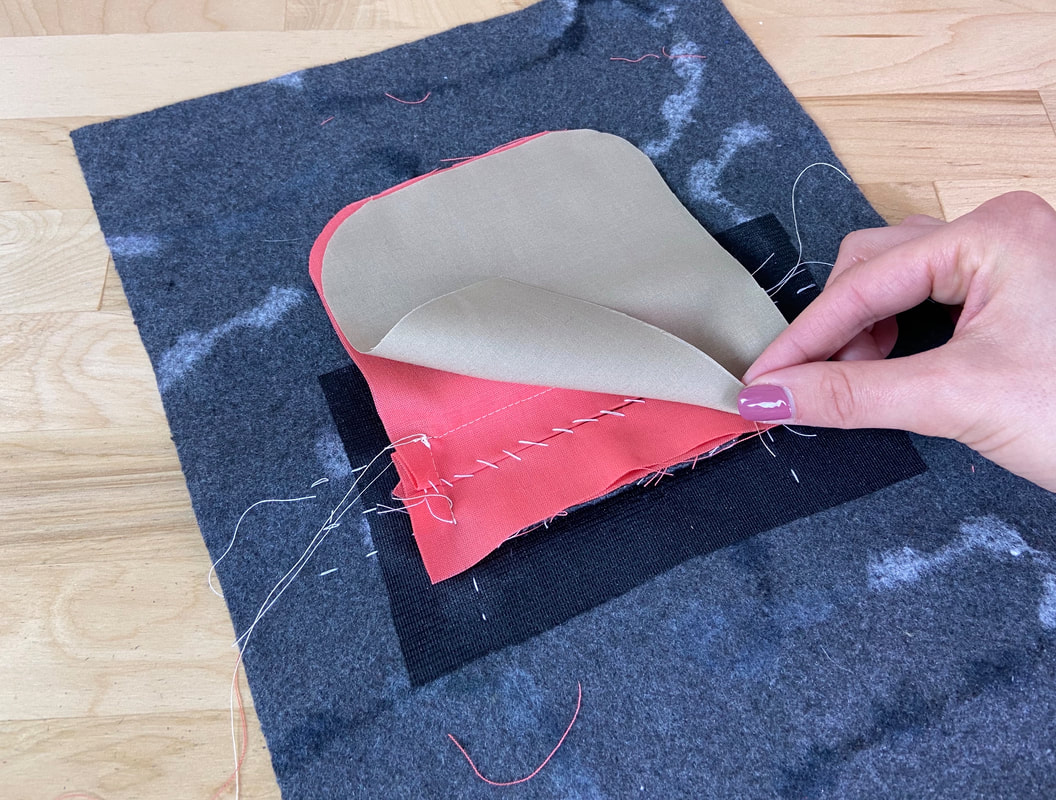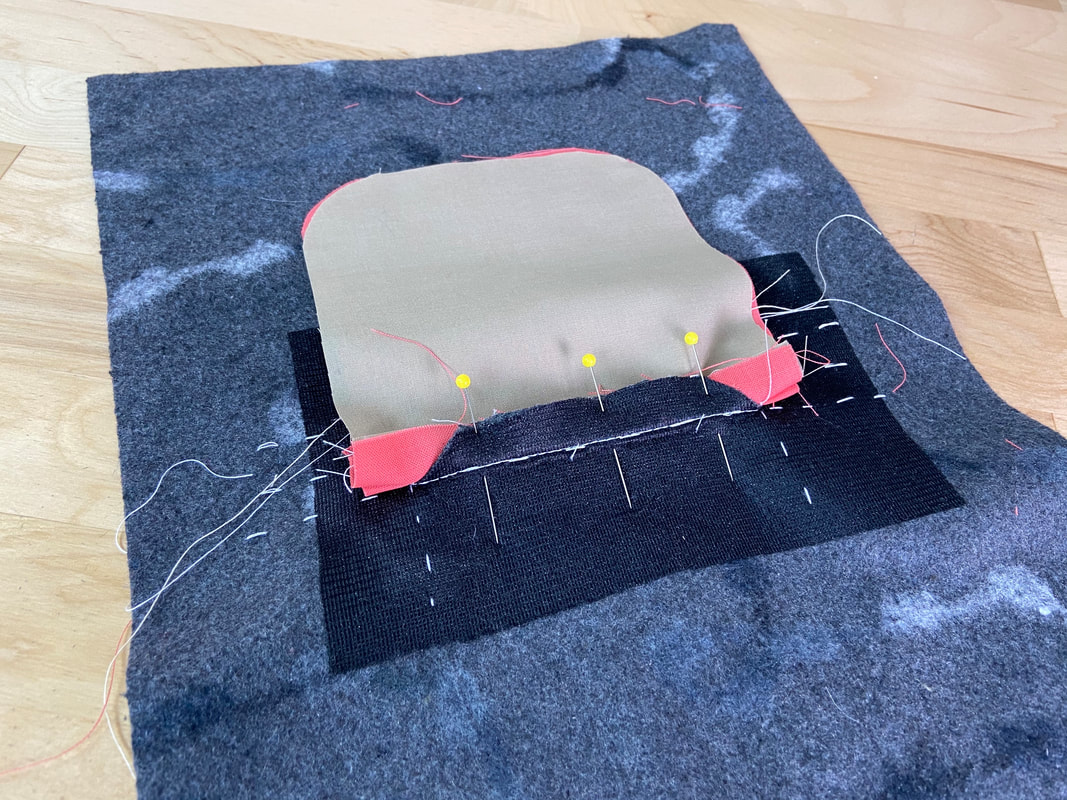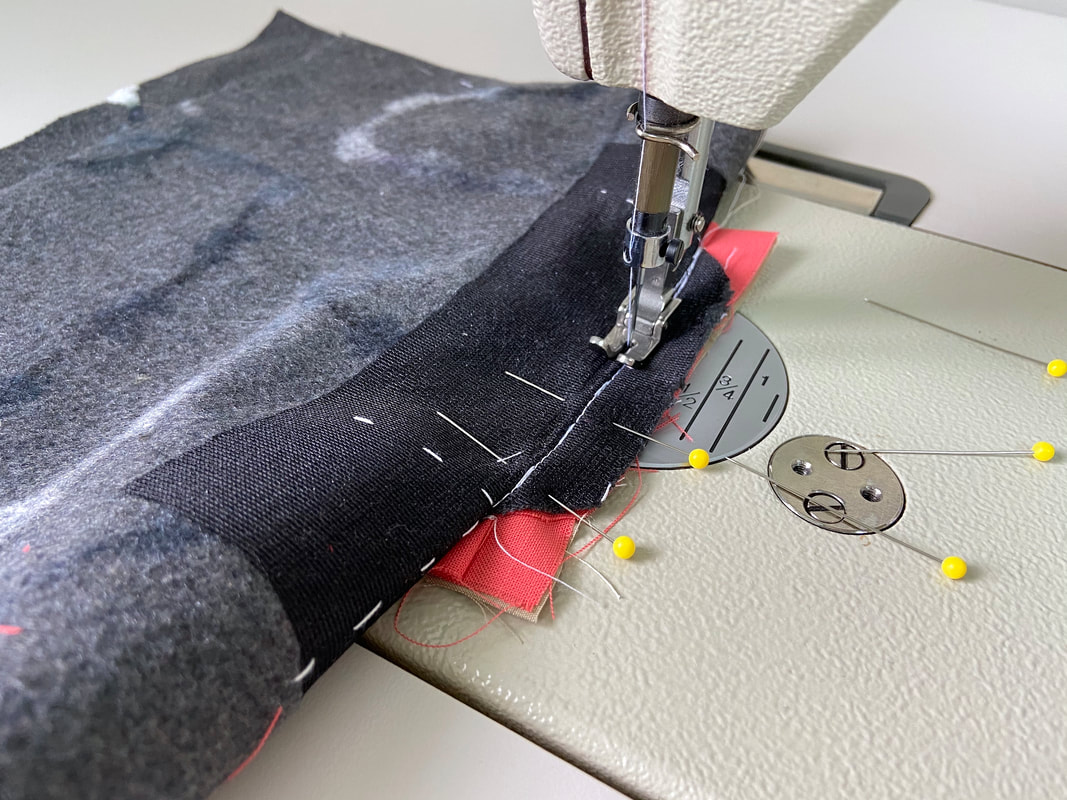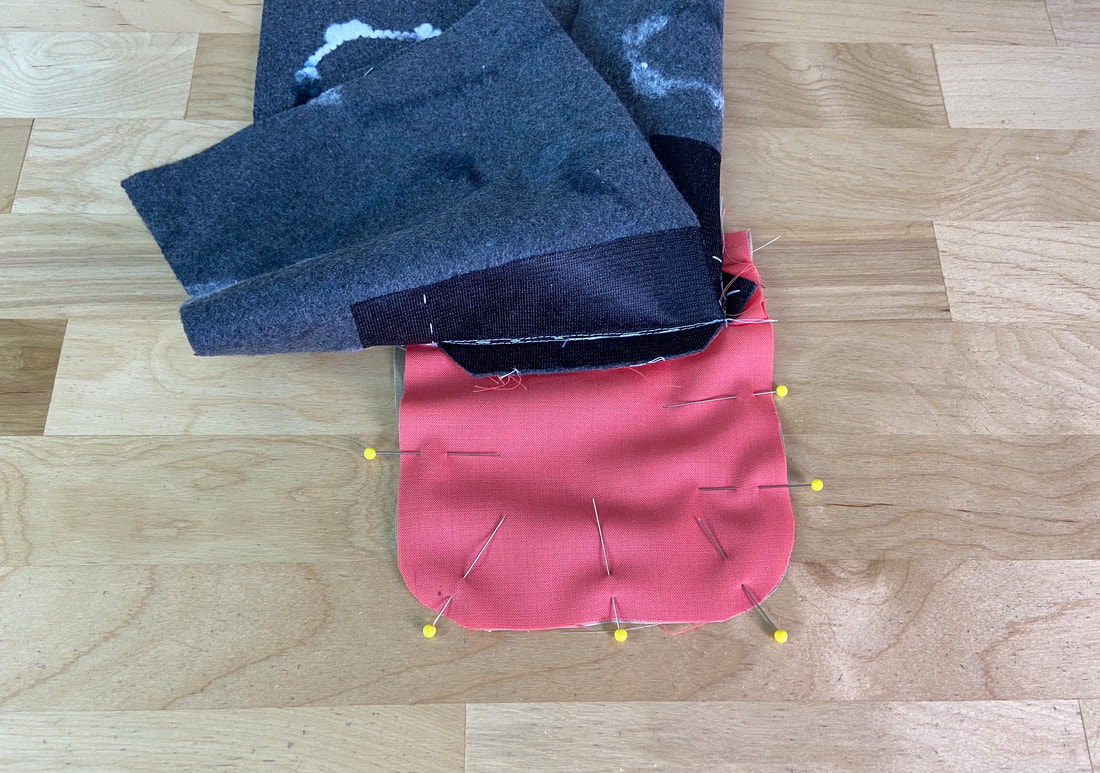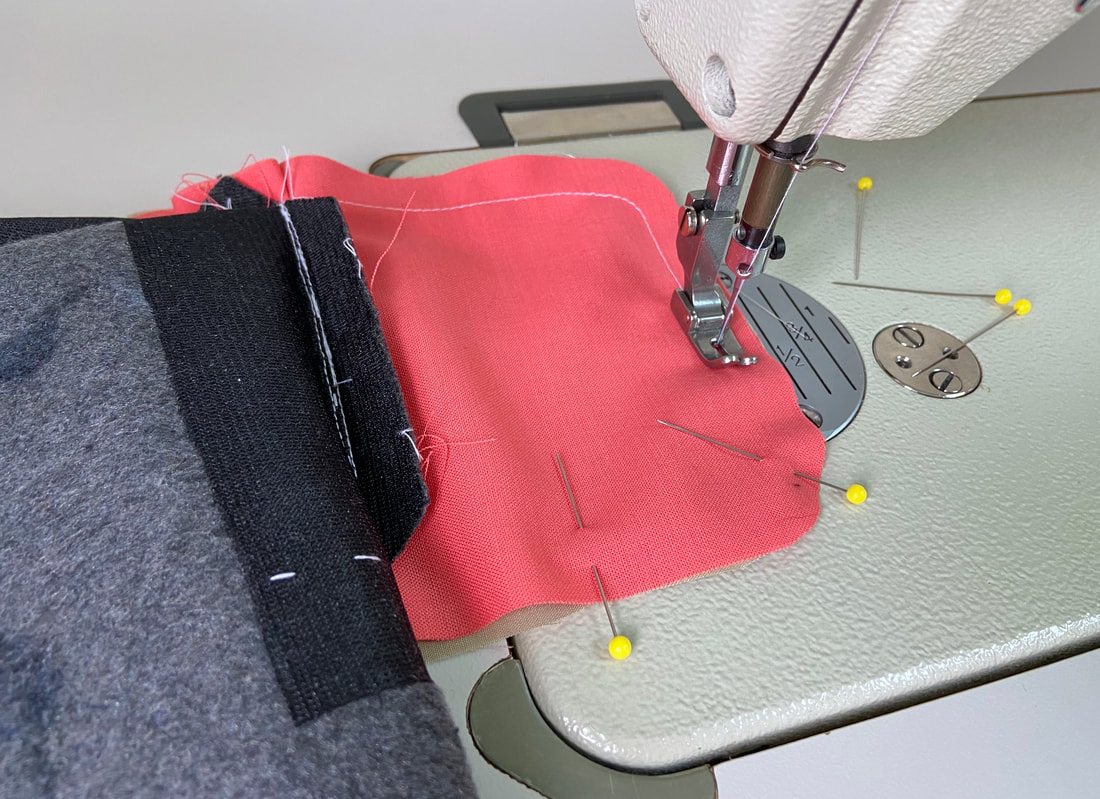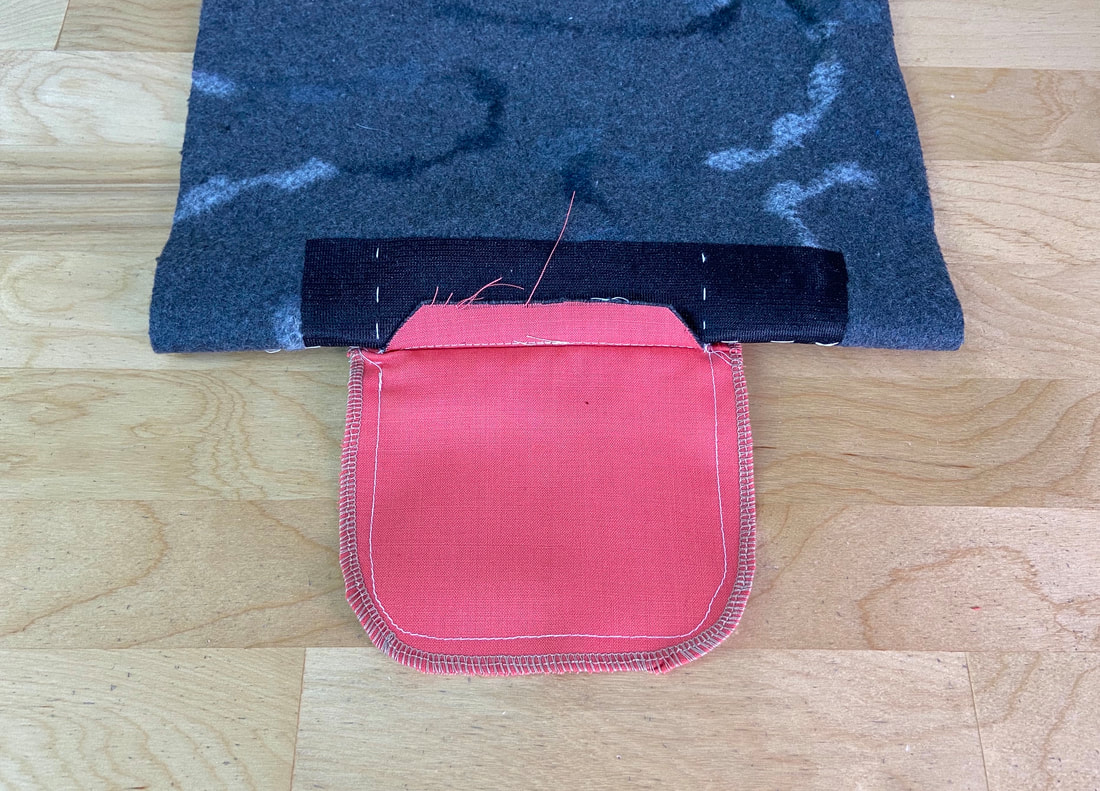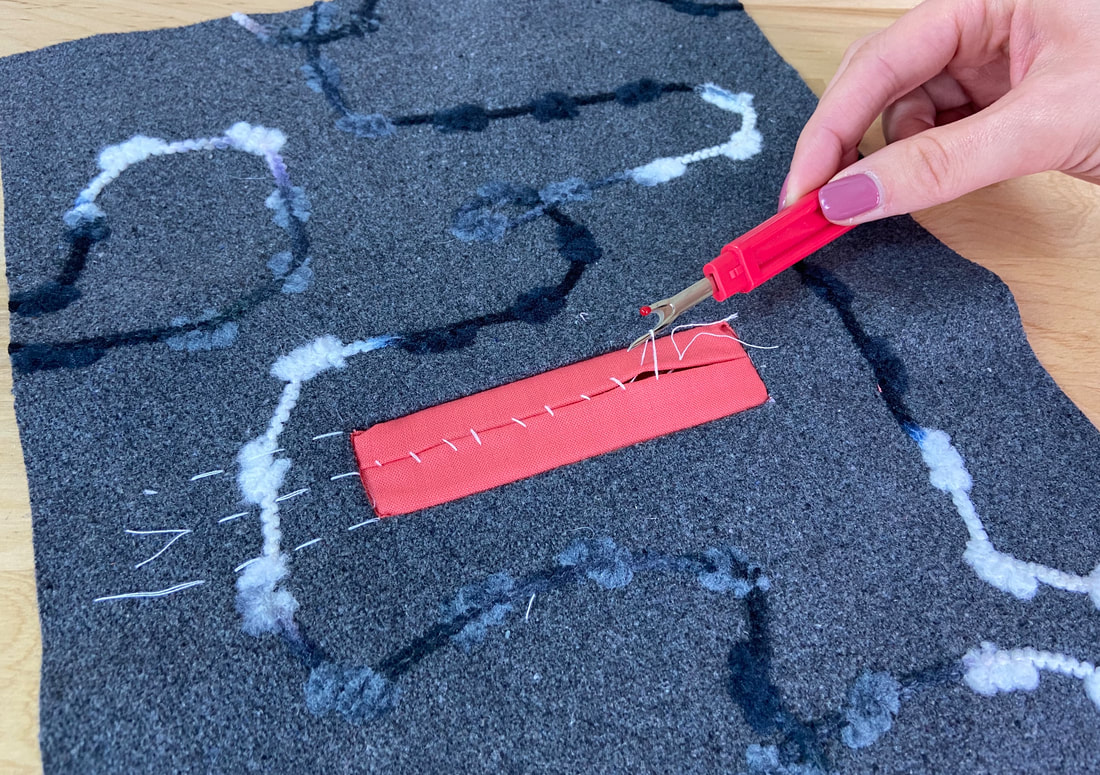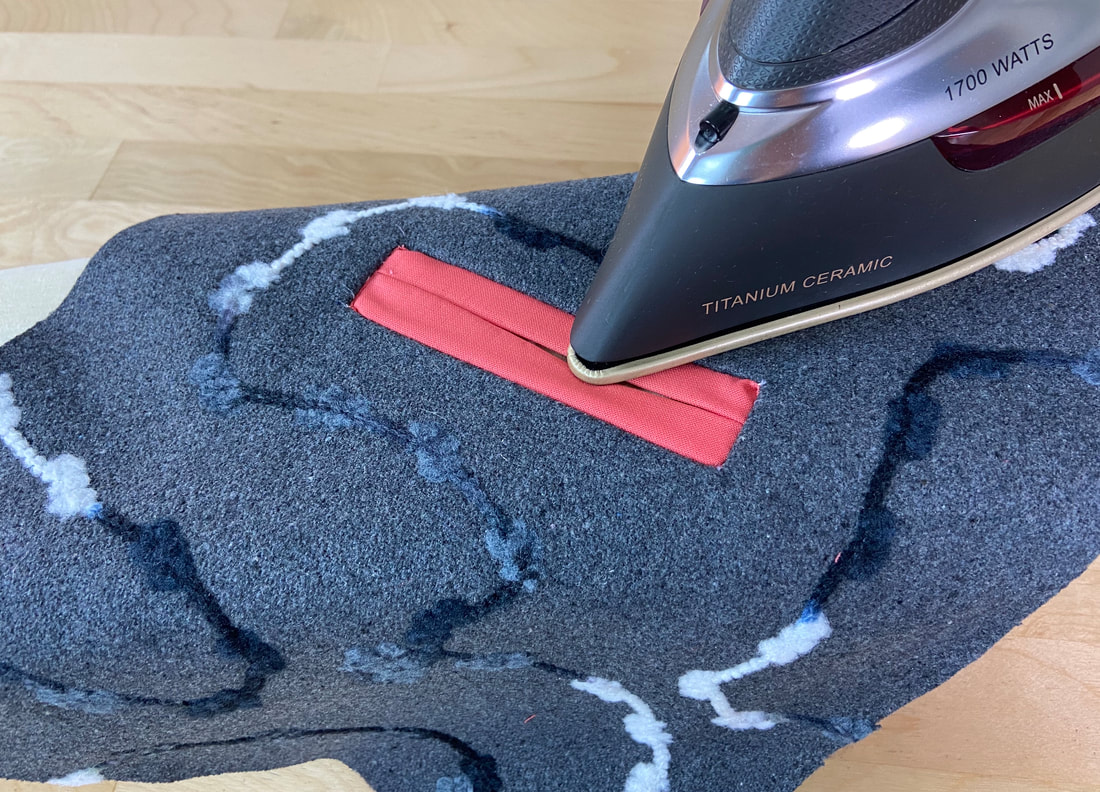What Is A Bound Pocket
Bound pockets fall in the slash pocket category. A slash pocket opening is cut into the fabric surface as opposed to being patched on or sewn into a seam. A bound pocket is also commonly referred to as a double welt pocket.
From a technical standpoint, the difference between a bound pocket and a welt pocket is that the bound style uses the pocket bag pieces to form the welt-like opening.
A traditional welt pocket on the other hand, uses separate folded fabric strips to form the individual welts (can be single or double welt). These welts are either machine stitched or hand stitched into the pocket’s slash opening.
The beauty of a bound slash pocket is that since the pocket bag is also used to finish its opening edges, you don’t have to worry about cutting and measuring individual welt pieces. However, since these pocket layers will show on the outside of the garment, the pocket bag fabric should be chosen carefully. Unless a contrasting effect is desired, the same fabric as the garment is used.
While constructing the pocket bag of the same fabric as the garment is suitable in most cases, some thick, heavy fabrics can add too much bulk if used within the pocket body. In this case, instead of a bound pocket (like the one shown below), you can sew a welt pocket with separate welts as described in this tutorial: Sewing A Double Welt Pocket With Flap. To further minimize bulk, use lining fabric for the pocket bag.
If you are set on the bound application, you have the option of splitting the pocket pieces with a seam and using lining for the inner portion of the pocket bag.
In general, slash pockets are considered to be more difficult to sew, especially for sewing beginners. A bound pocket in particular, requires double the precision. Not only do you have to form an opening with even folded edges, you also have to achieve a perfectly-shaped, well-defined rectangular cutout.
While the bound pocket application shown below is in fact a bit tricky for beginners, if you mark the pocket stitch lines accurately and exercise caution when slashing the pocket opening, you’ll find the process becomes easier and a lot more enjoyable. Just as important is to follow all sewing steps in consecutive order.
In addition, to achieve the perfect bound pocket application, don’t skip over these important factors:
- Always back the garment’s wrong side with interfacing at the exact location of the pocket slash. The interfacing piece should be about 2” wider and 4” longer than the pocket opening itself. Using interfacing not only increases the durability of the final application, it also provides stability in the stitching process.
- Using a hand basting stitch, mark all pocket lines directly on fabric. These lines are crucial in the process of aligning and stitching the pocket pieces.
- When stitching pocket opening layers, always use a smaller stitch for increased control. A denser stitch also provides more long-term durability. More on this concept in the sewing steps below.
- Mark all slash lines, and cut the pocket opening as accurately as you can. It is the manner in which you cut the slash opening that gives you those perfect rectangular corners at each pocket end.
How To Sew A Bound (Double-Welt) Pocket Application
Start by marking and cutting the two pocket pieces. In this example, the finished bound pocket opening is 1” tall. Conventionally, bound pockets are a little thinner than 1” but in this case, a wider bound pocket is easier to sew and learn with.
To cut the longer pocket piece, add 3” to the desired pocket depth and an additional 1” to the desired pocket opening width. The resulting measurements provide the final pocket piece dimensions.
In this case, the pocket bag depth is 6” and the finished pocket length is 4”. Thus, this larger pocket piece is cut at 8” long by 5” wide.
The smaller pocket piece will be cut at only 1” longer than the desired pocket depth and again, 1” wider than the desired pocket bag width.
The resulting smaller pocket piece is 6” long by 5” wide.
If these measurements sound confusing, use the diagram above for more guidance.
1. Using a ruler and tailor’s chalk, measure and draw the two rectangular pocket pieces directly on the fabric’s wrong side. Carefully cut them out.
Round the bottom corners of the pocket bag if desired. You may find that curving the bottom edges will facilitate the alignment and construction process to follow.
2. Cut a piece of interfacing about 2” longer and 2” wider than the desired pocket opening. Fuse it to the wrong side of the fabric at the exact location of the final pocket application.
3. Using a hand basting stitch, mark the exact bound pocket lines directly on the garment surface as shown. Mark the precise rectangular shape of the bound pocket and the center line intersecting it. Extend the stitches at each corner as shown.
4. With the garment on its right side, center the larger pocket piece on top of the pocket basting marks such that its edge is 1.5” from the bottom basting mark as shown. Place the pocket piece face down with face sides touching. Insert pins to secure.
Hand baste around to pocket piece to keep the layers aligned.
5. Turn the garment layer on its wrong side and following the initial basting marks from Step 3, machine stitch the outer basting lines to form a fully enclosed rectangle as shown.
Use a short stitch length and overlap the stitches to lock them in place.
Remove the outer hand basting at this point.
6. Carefully slash directly on the center line through all fabric layers as shown. Cut along the center line until you arrive at about ½” from each end.
From the ½” distance, slash carefully into each corner to form a triangular-shaped cut. Cut as close as you can to the corner but be very careful not to cut through the actual stitching.
7. Bring the pocket layer to the wrong side of the garment through the slashed opening as shown. Straighten out all the finished rectangular edges. It may help to gently iron the opening edges flat.
8. Fold the top and bottom portions of the pocket piece such that they create two perfectly equal folded edges over the front pocket opening.
As soon as you achieve the perfect alignment, iron the folded edges in this position.
To facilitate the remaining sewing process, whipstitch the abutted fold lines closed as shown.
If working with slippery or heat sensitive fabrics, it helps to hand baste over the folded edges to keep them flat and aligned during the rest of the application process.
9. Flip the garment back on its right side and peel the garment layer back to expose the pocket pieces.
Stitch each triangle piece at its base in a vertical straight line catching the pocket layers underneath.
10. Next, peel the garment layer back at the top to expose the pocket seam allowance. Pin and stitch through the seam allowance and pocket piece underneath next to the existing stitch as shown.
11. Place the smaller pocket portion over the stitched pocket layer such that their face sides touch and all edges align as shown.
12. Insert a few pins to keep the layers aligned. Stitch next to the existing stitchline as shown.
13. Pull the garment layer up to expose the pocket bag edges. Pin perpendicularly through the two pocket piece edges as shown.
14. Stitch the pocket edges closed starting at the top fold and moving down around the bottom then back up the other end of the top fold. This final stitch will complete the pocket bag.
15. To complete, finish the pocket bag seam allowance with an overedge stitch such as zig zag or serging.
16. Using a seam ripper, remove all hand basting, including the whipstitch keeping the pocket opening shut.
17. Iron the final bound pocket both on the face and wrong side of the garment. Be careful with heat sensitive fabrics- use the appropriate setting and a protective cloth if needed.

